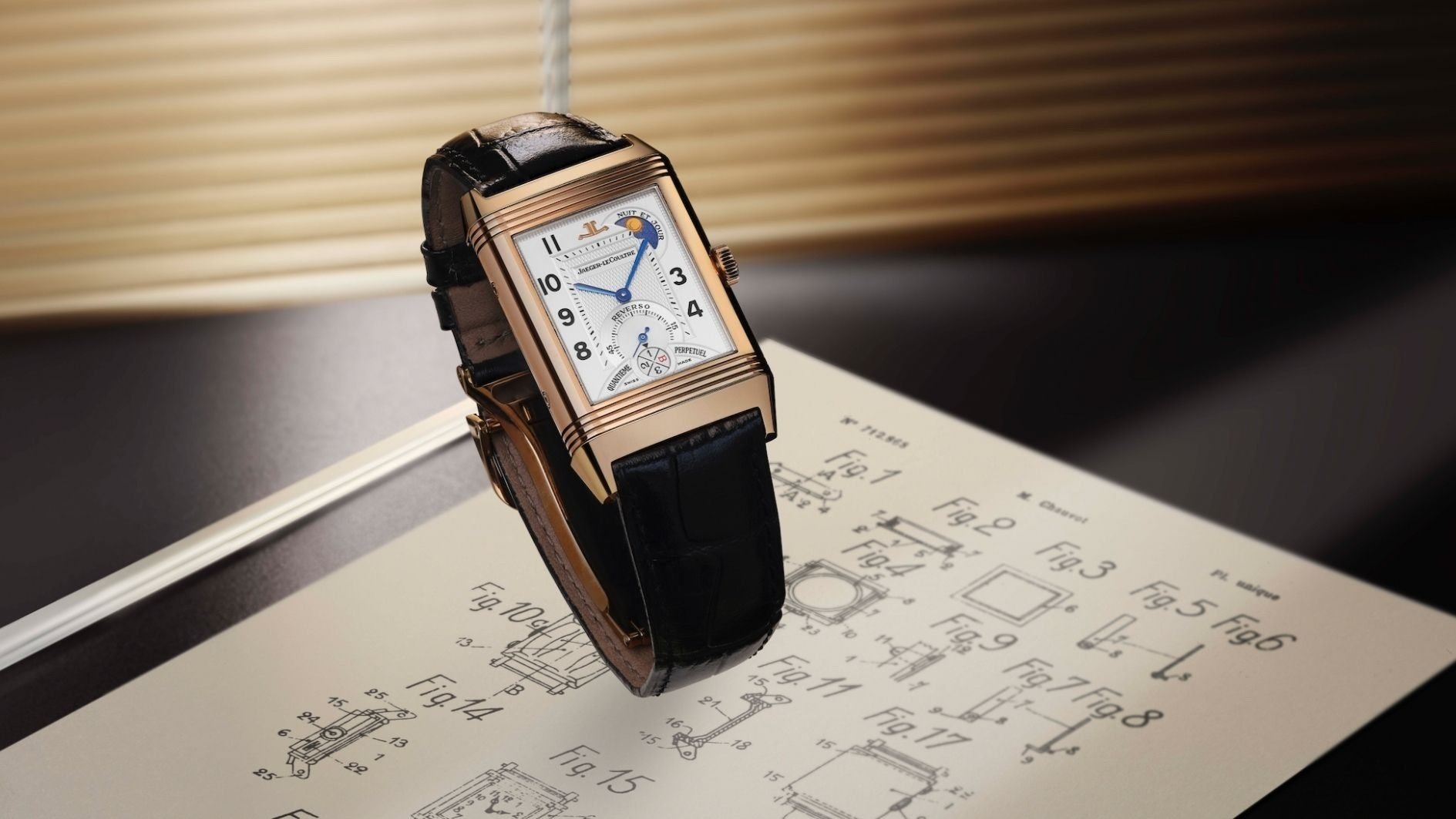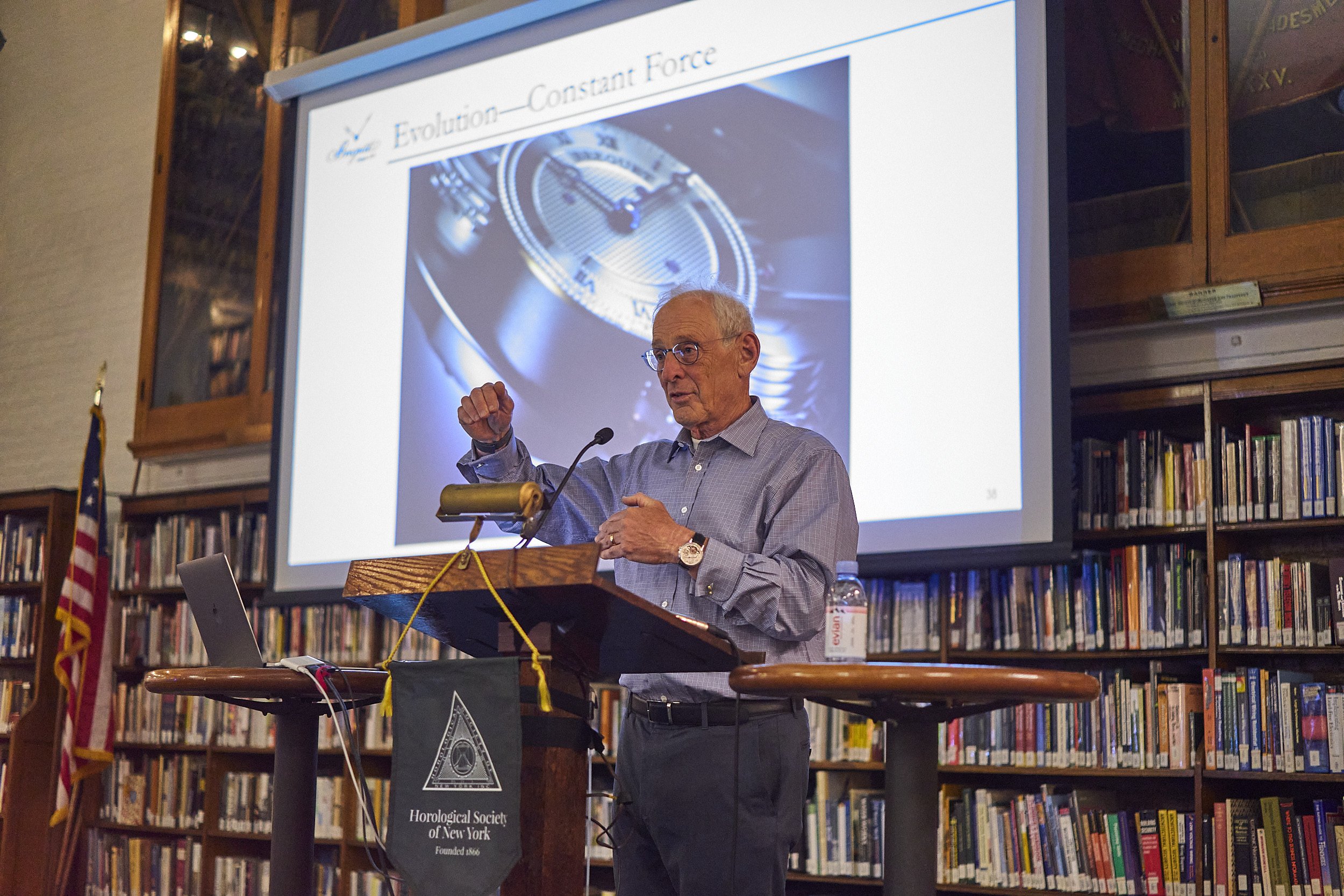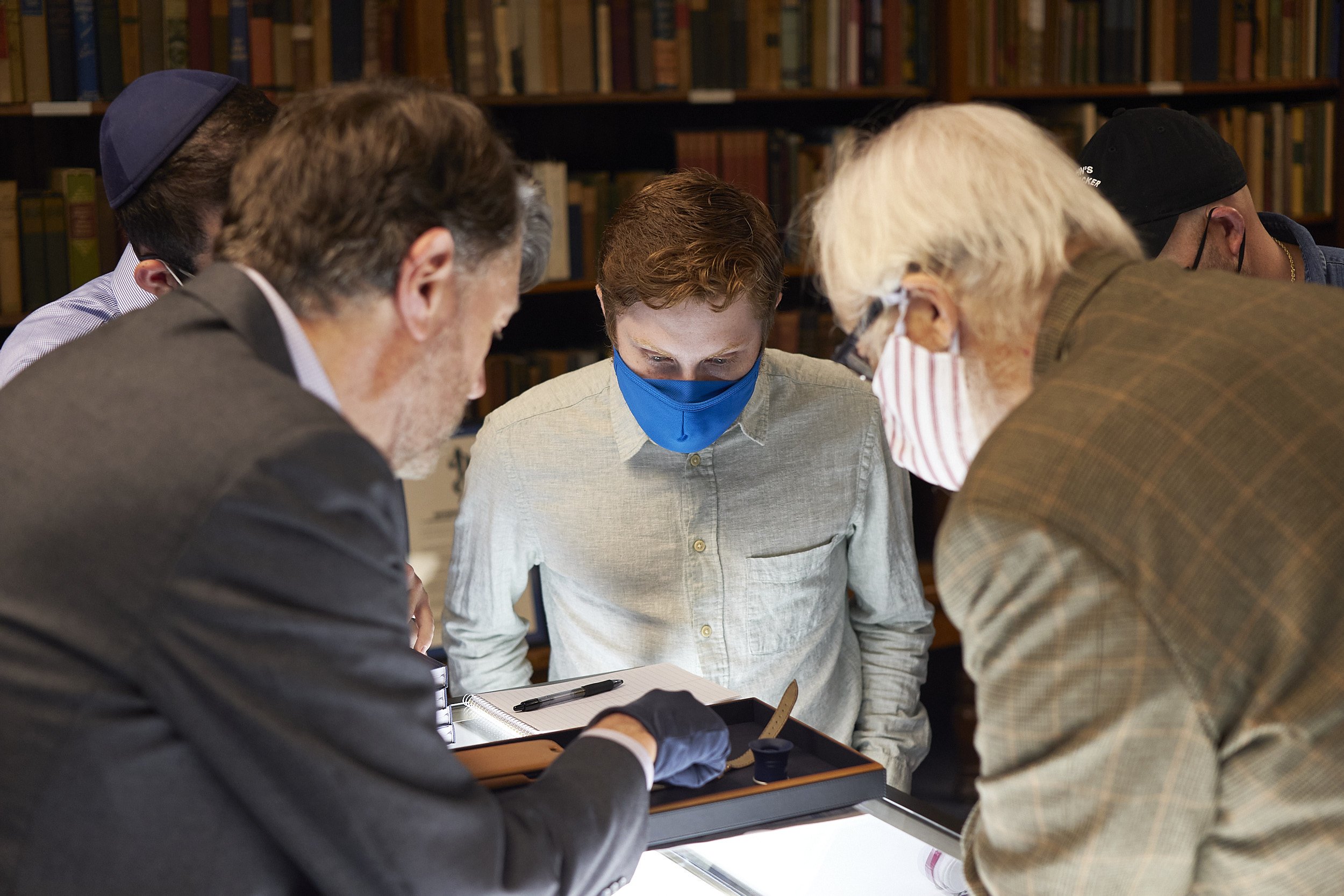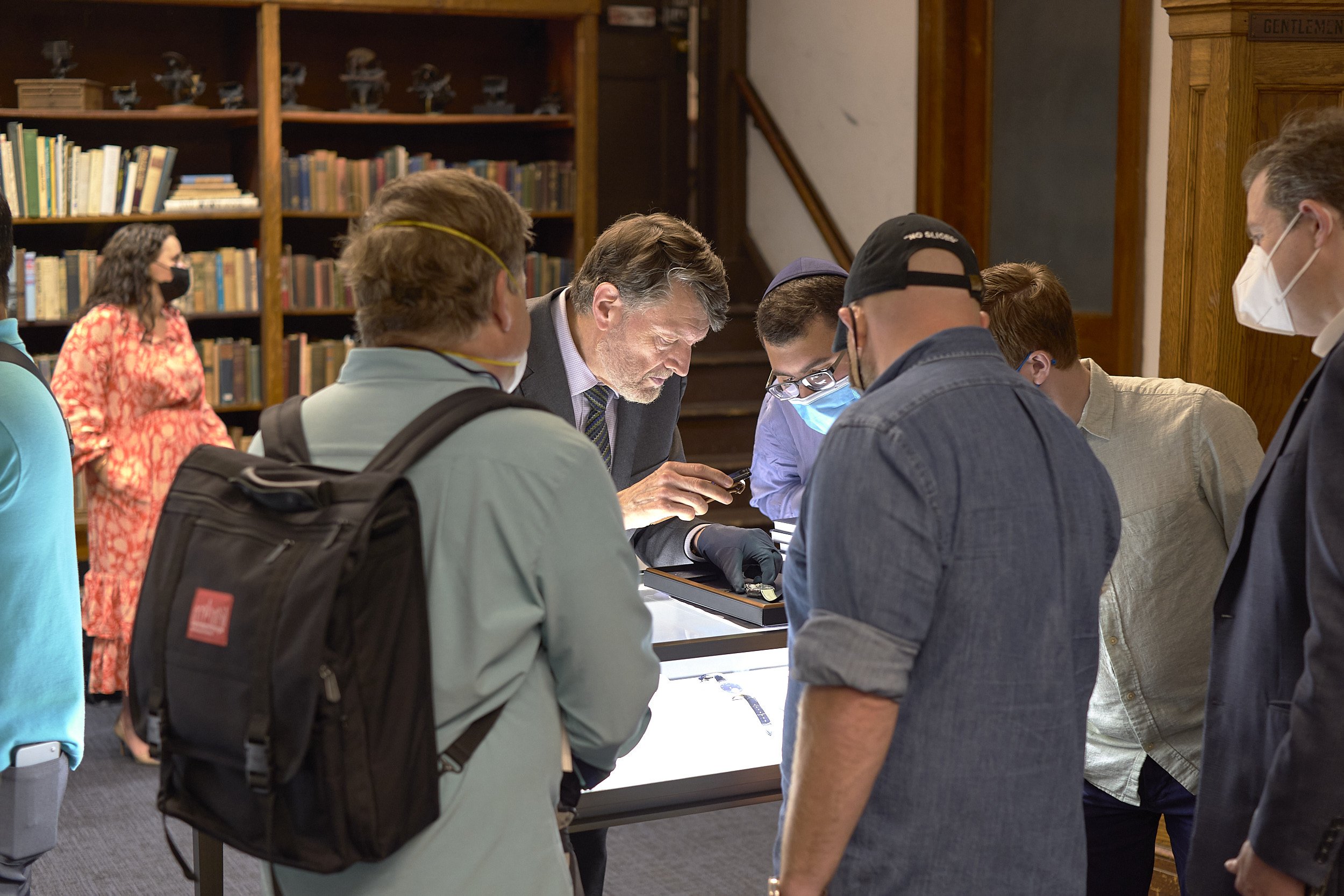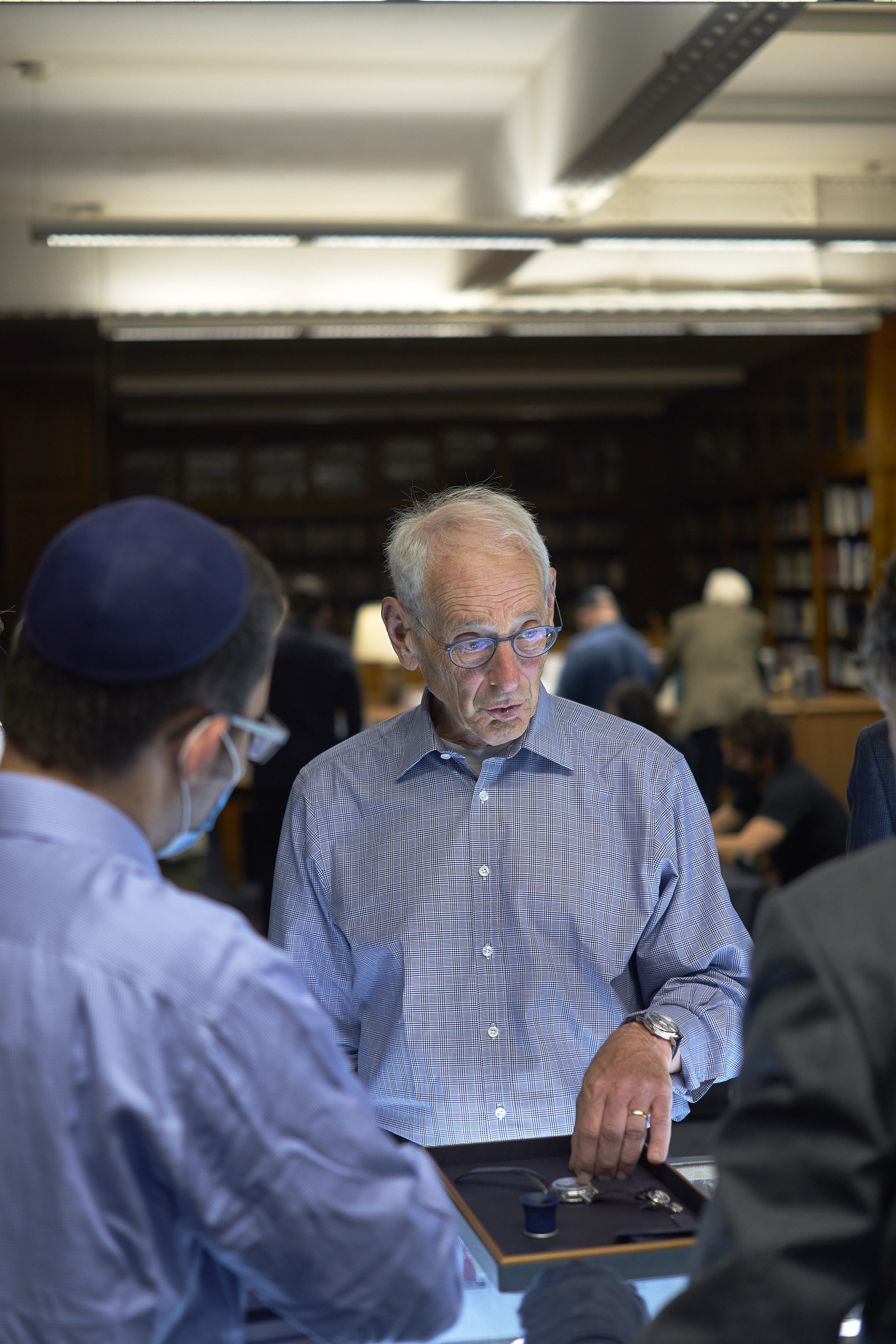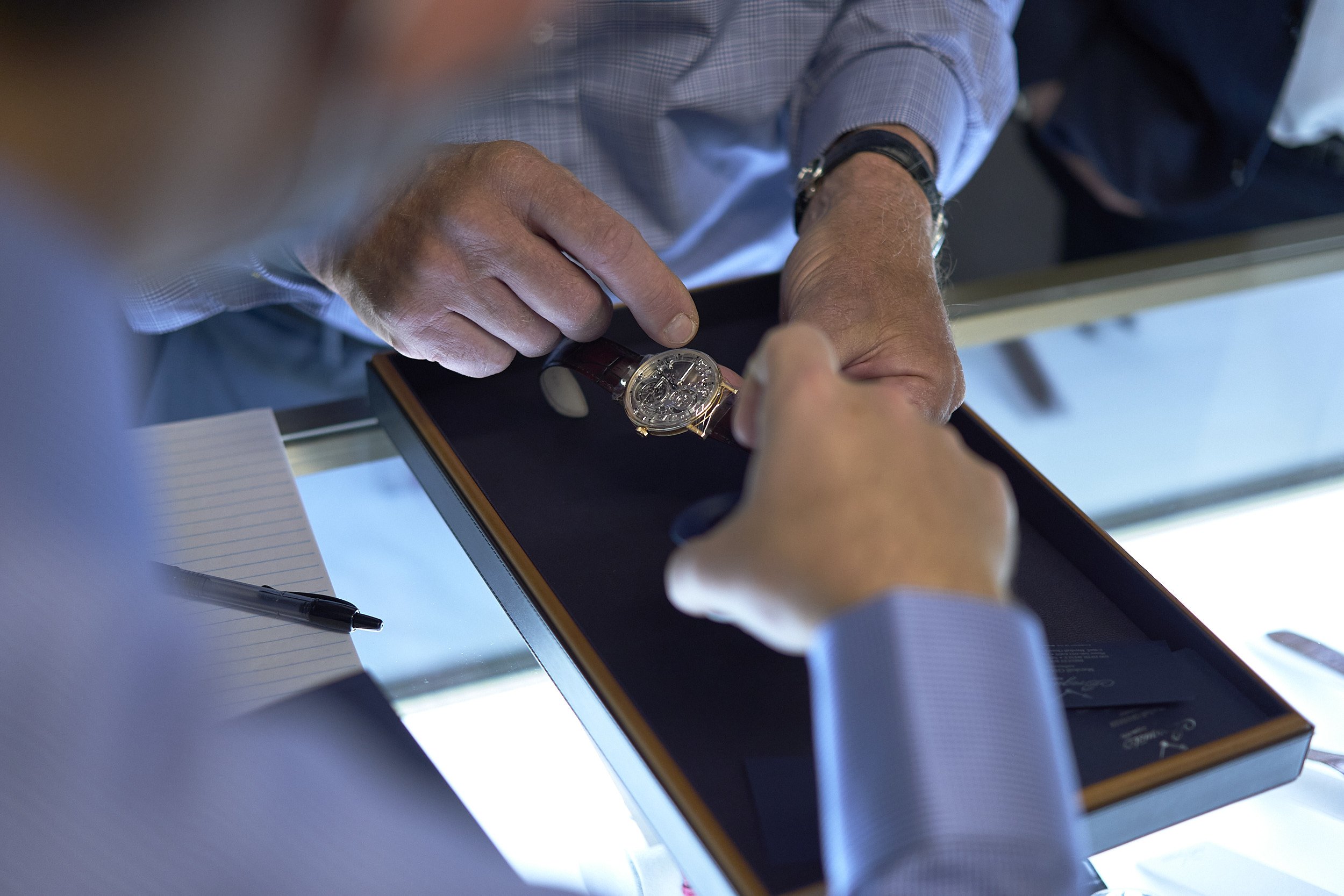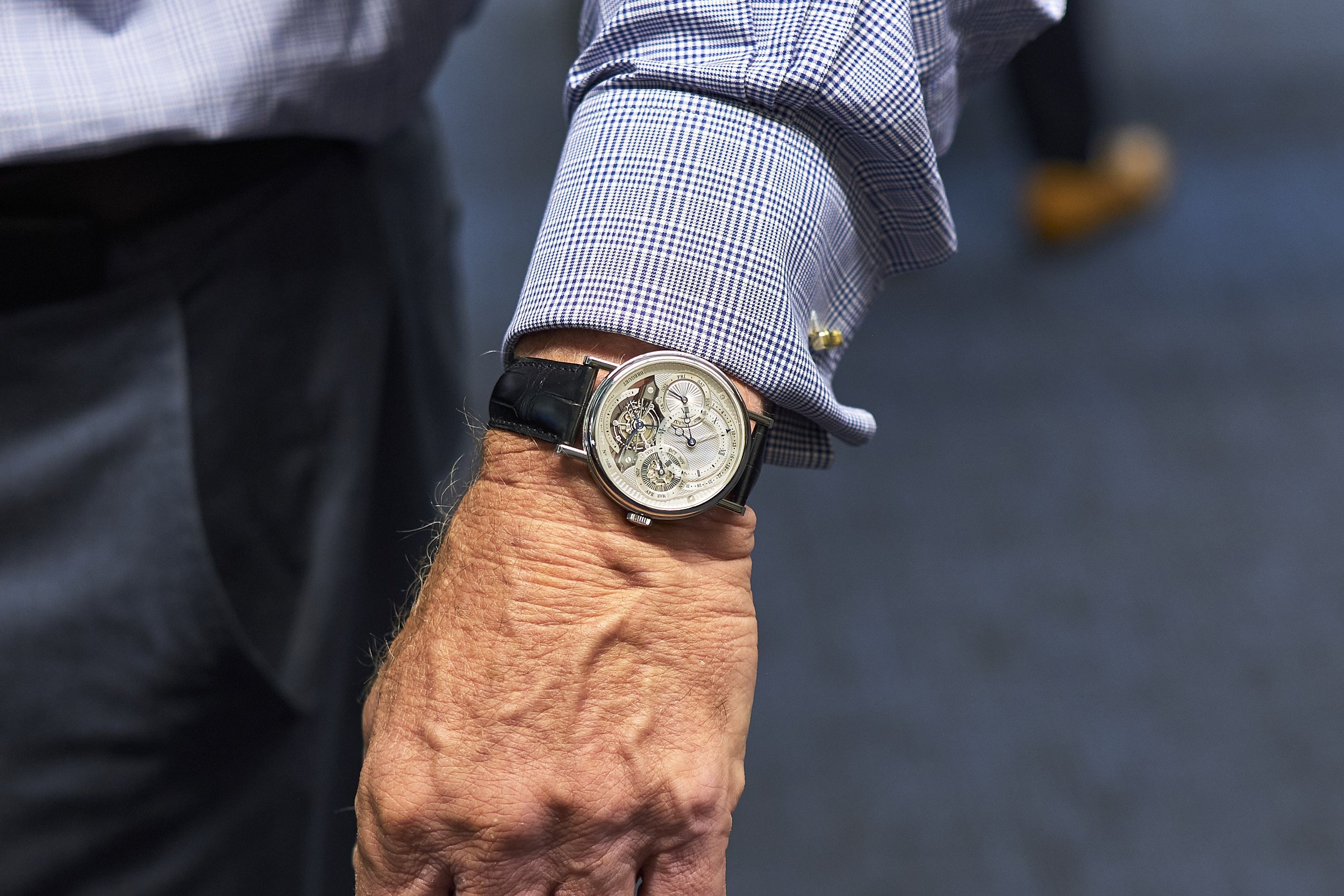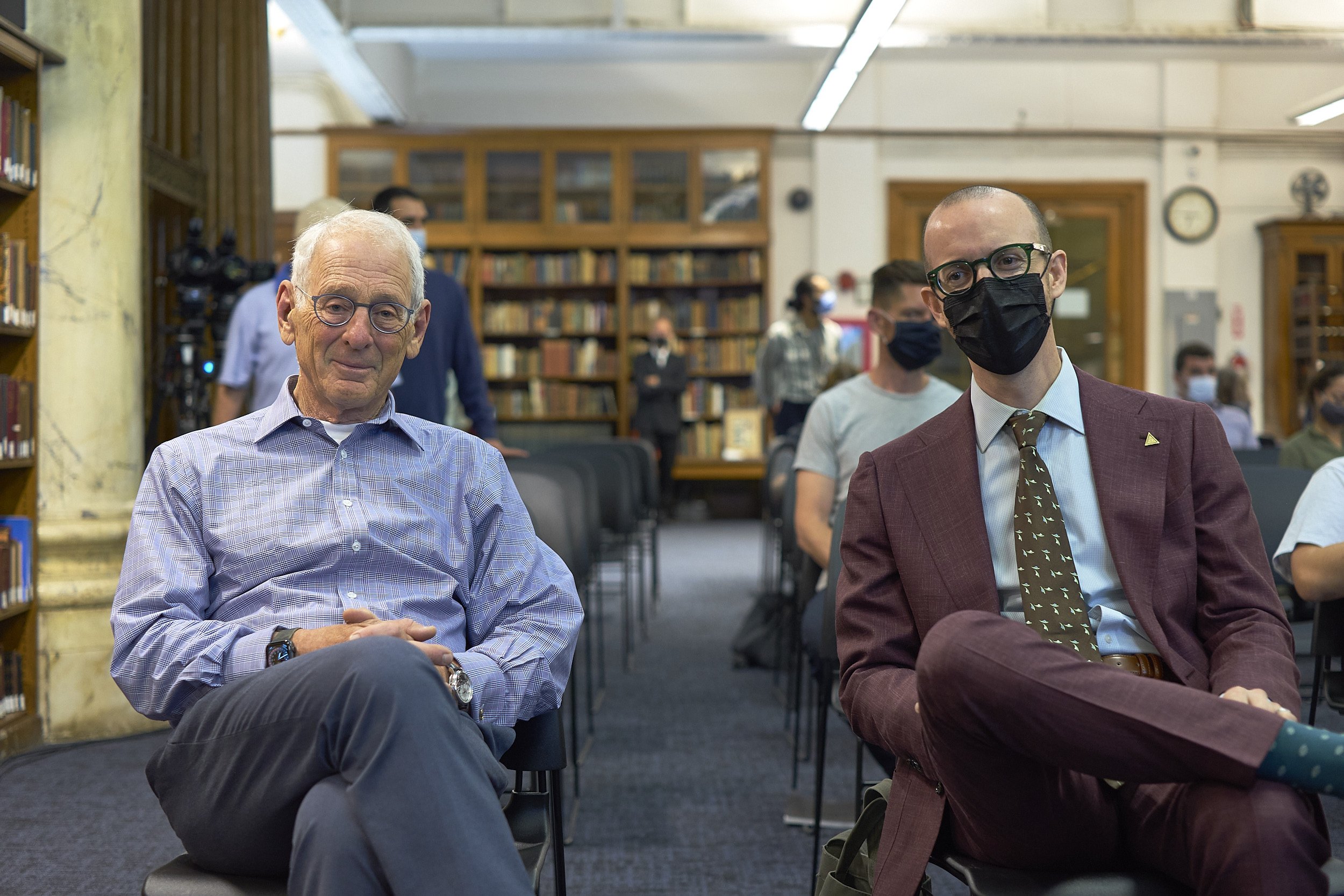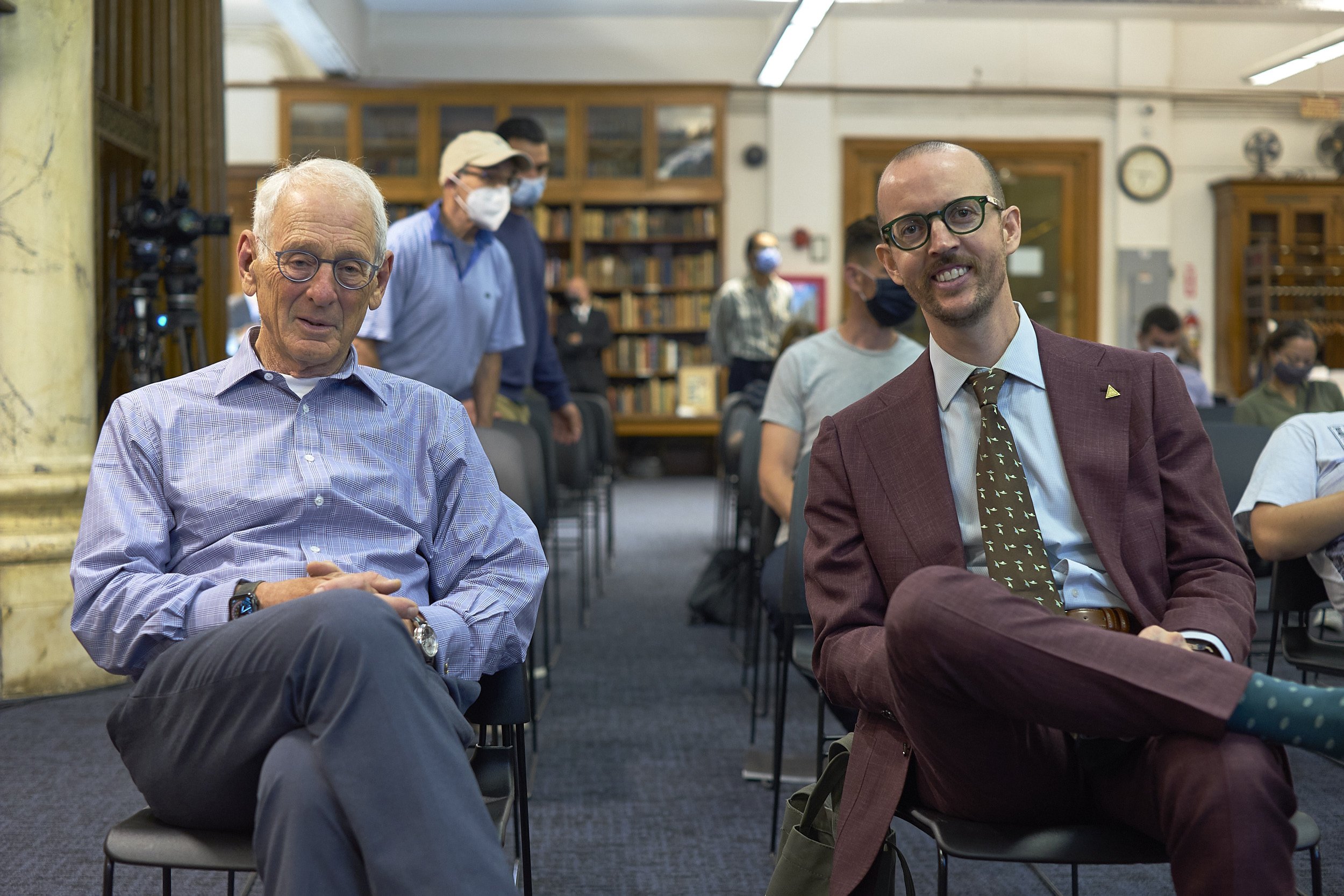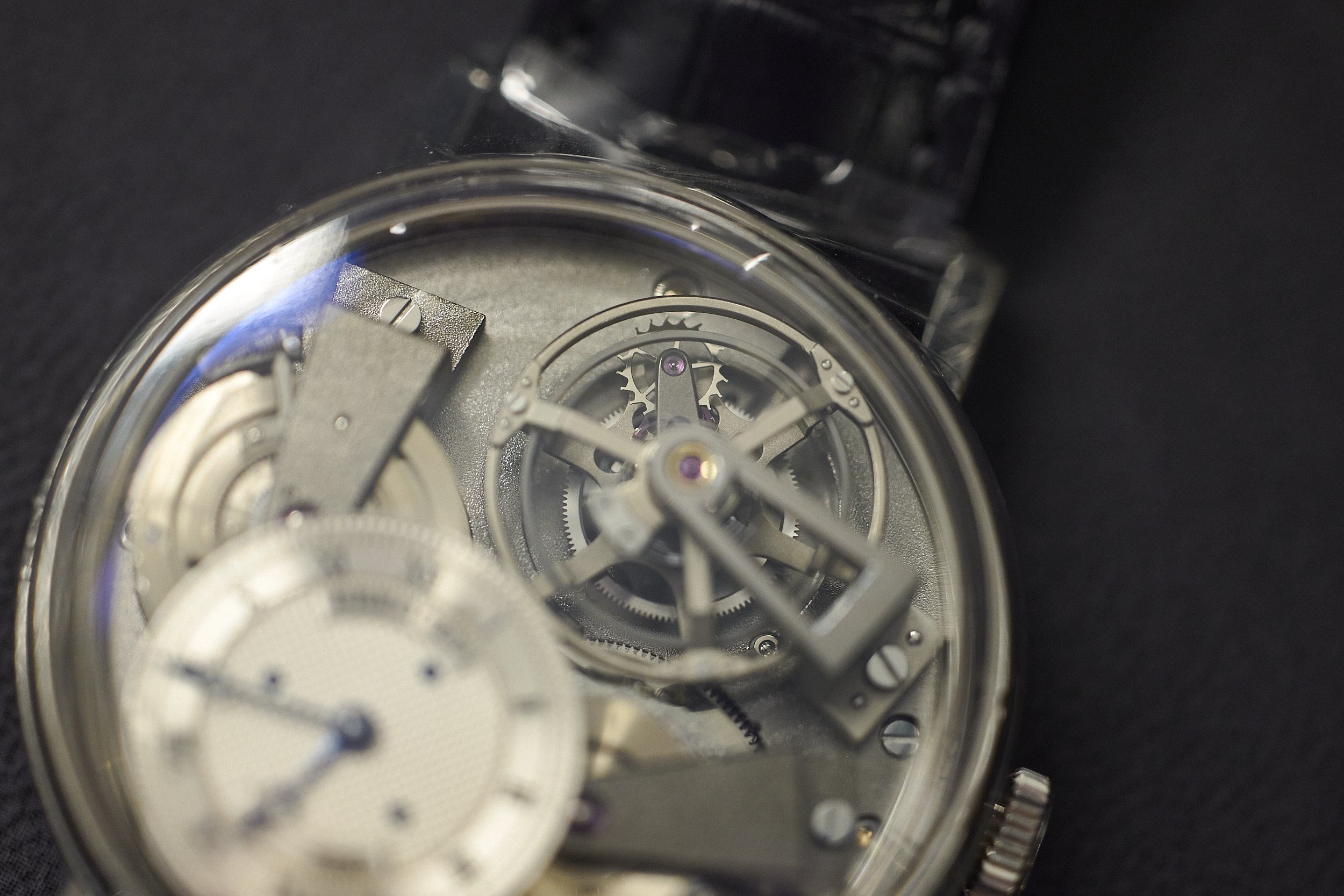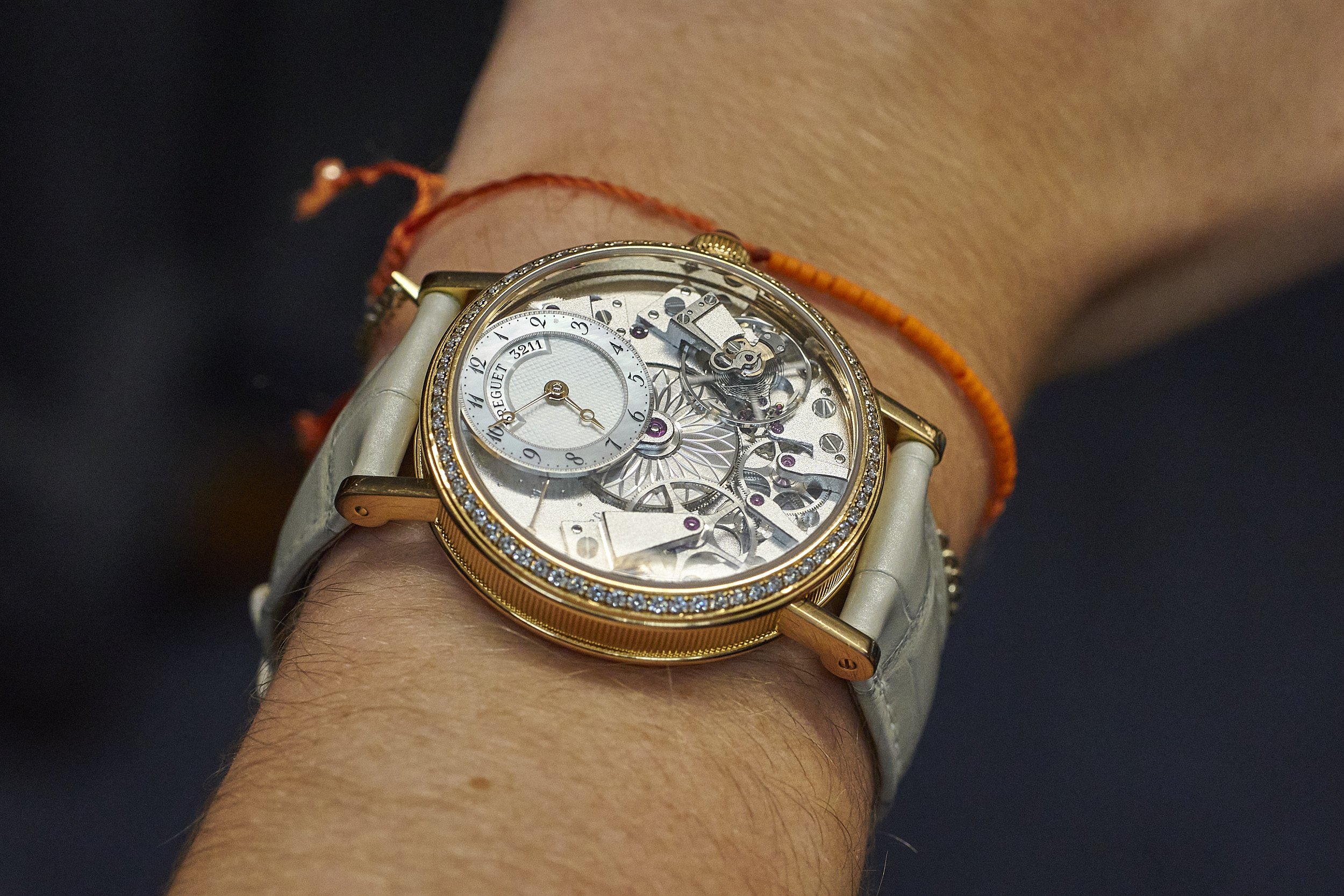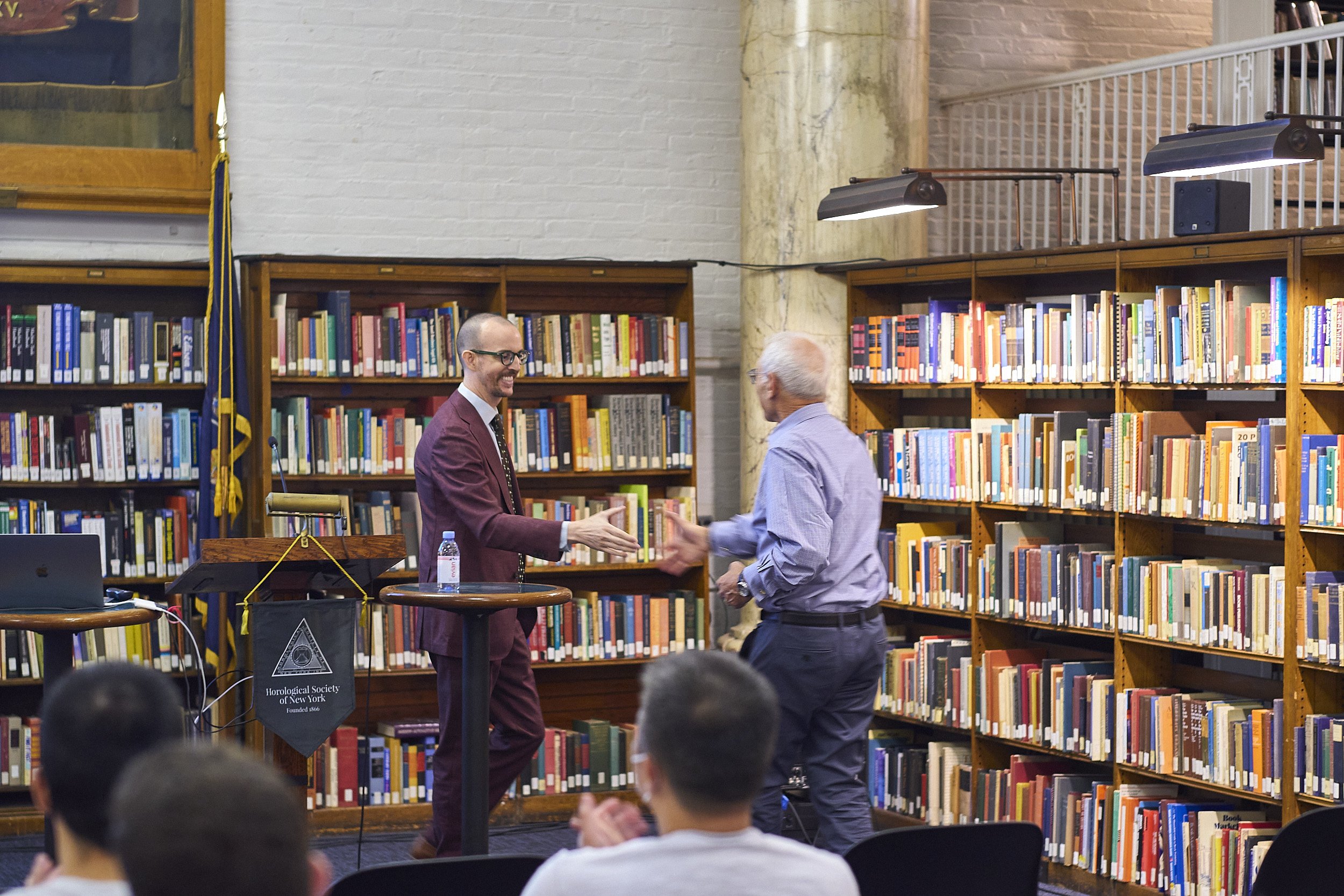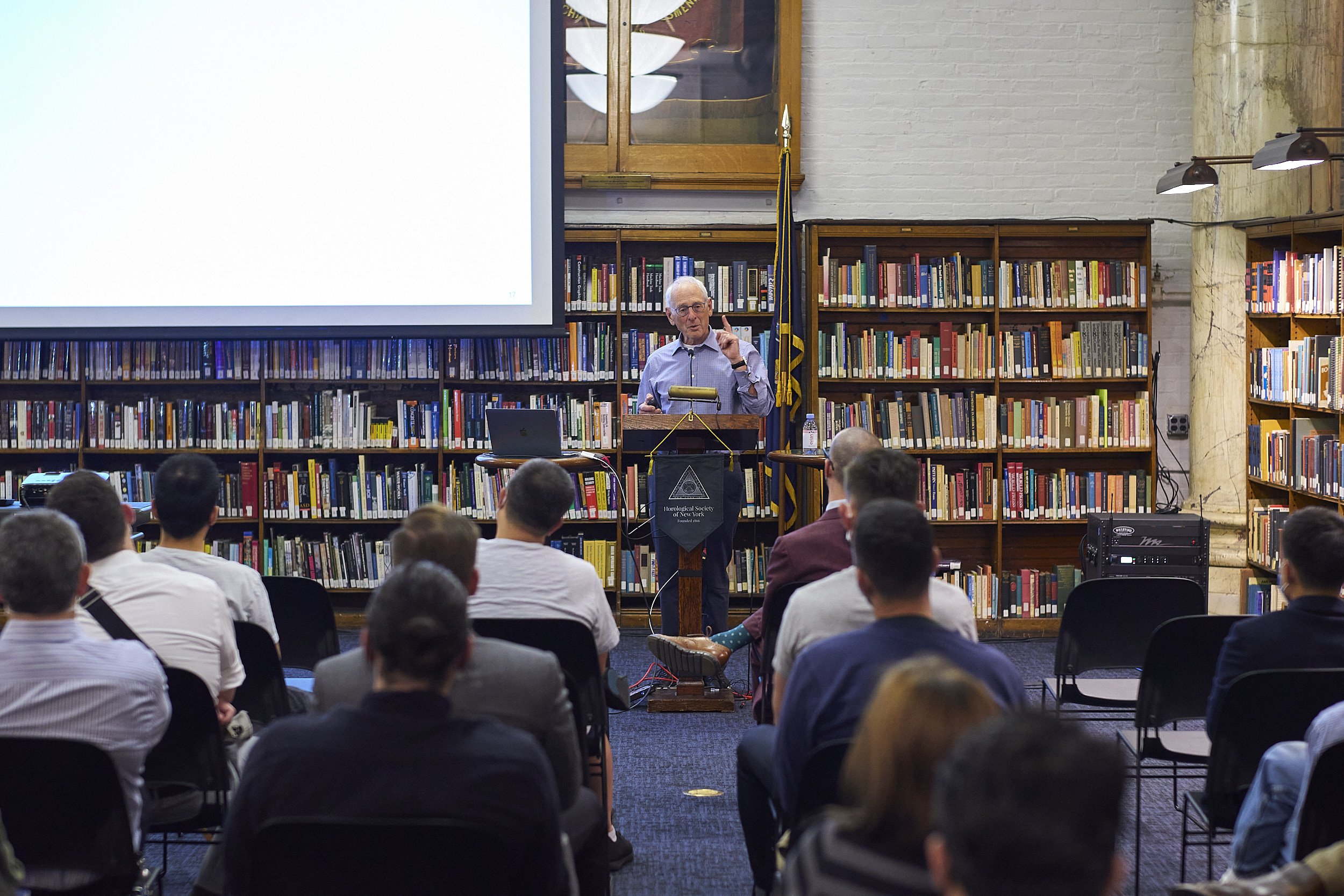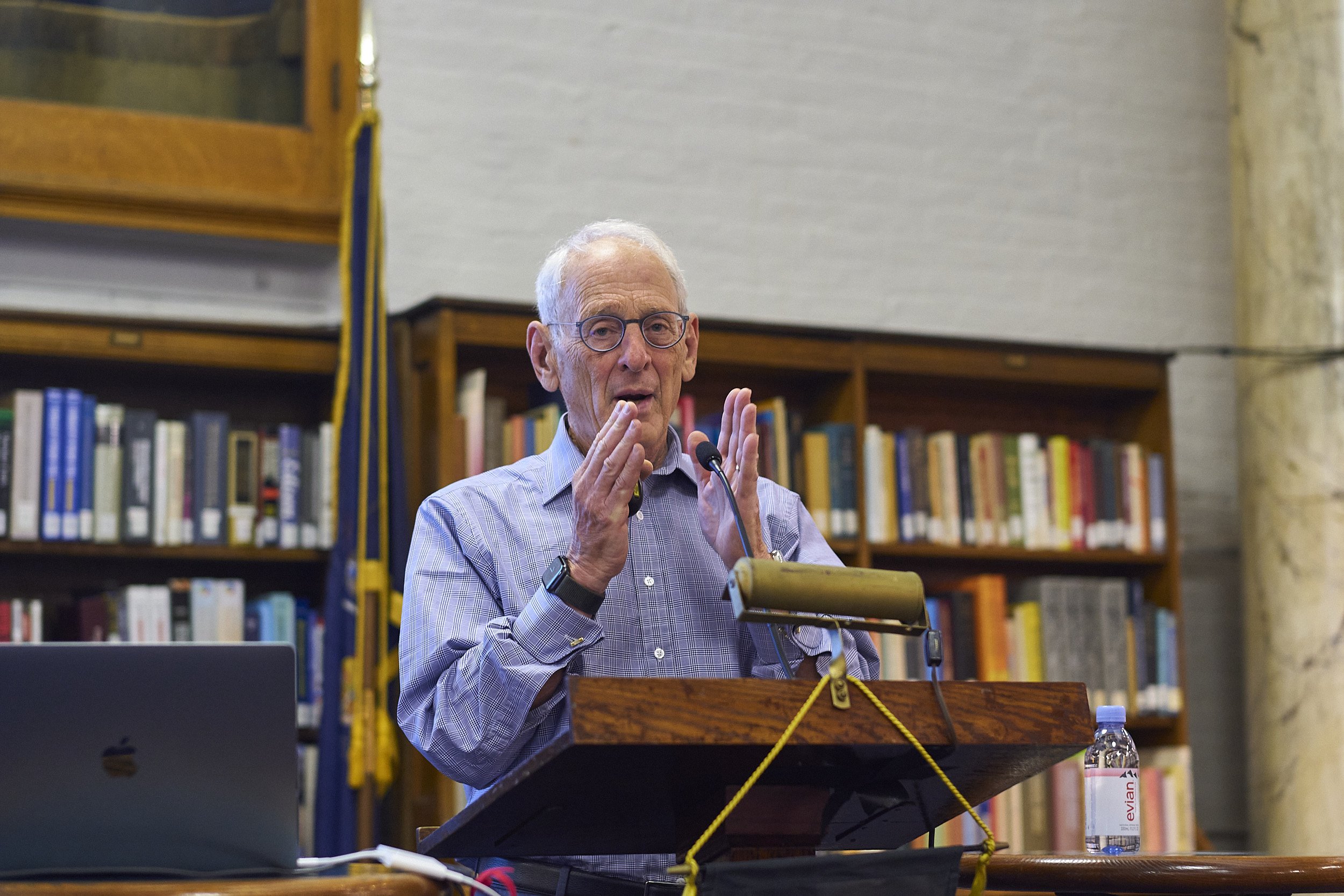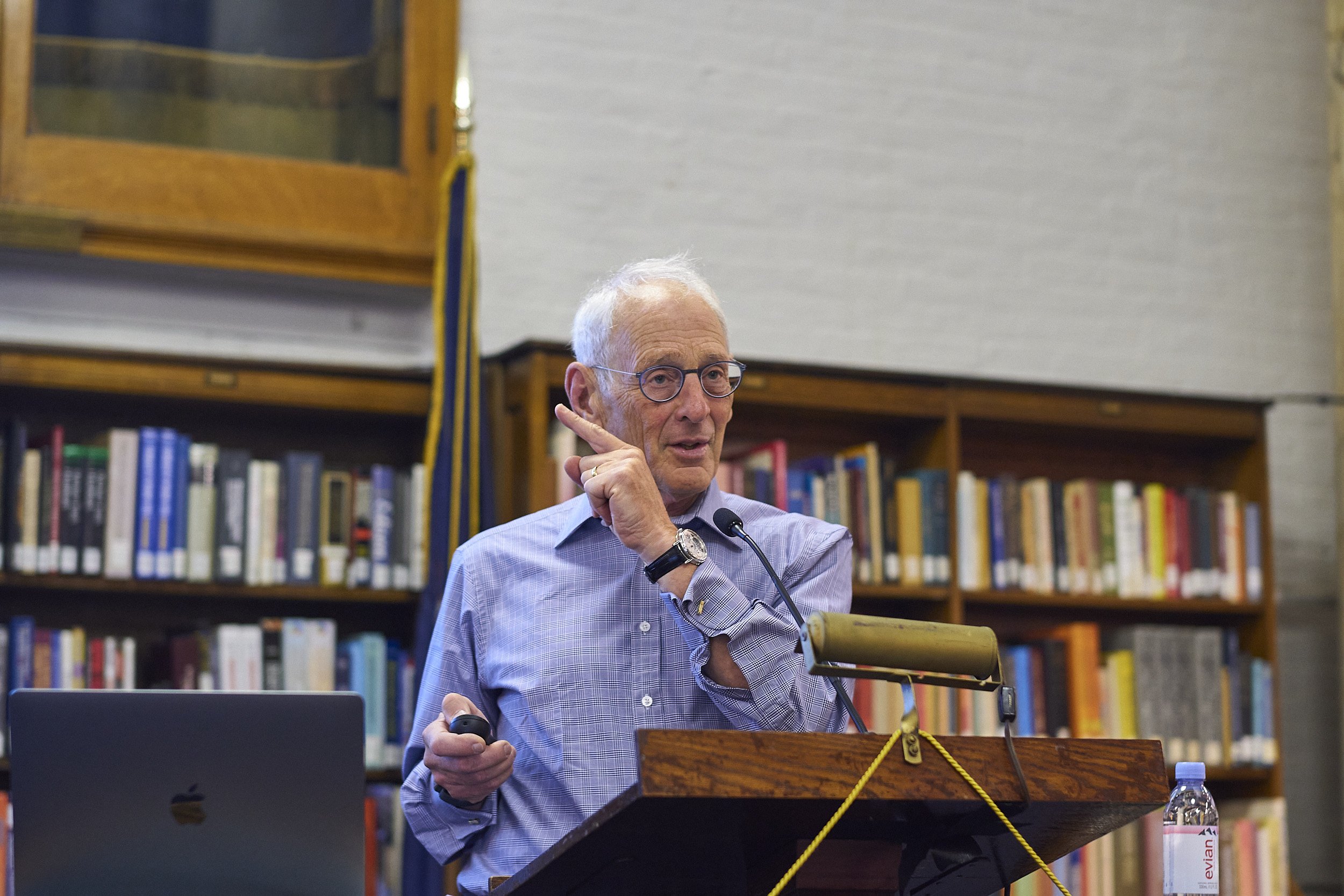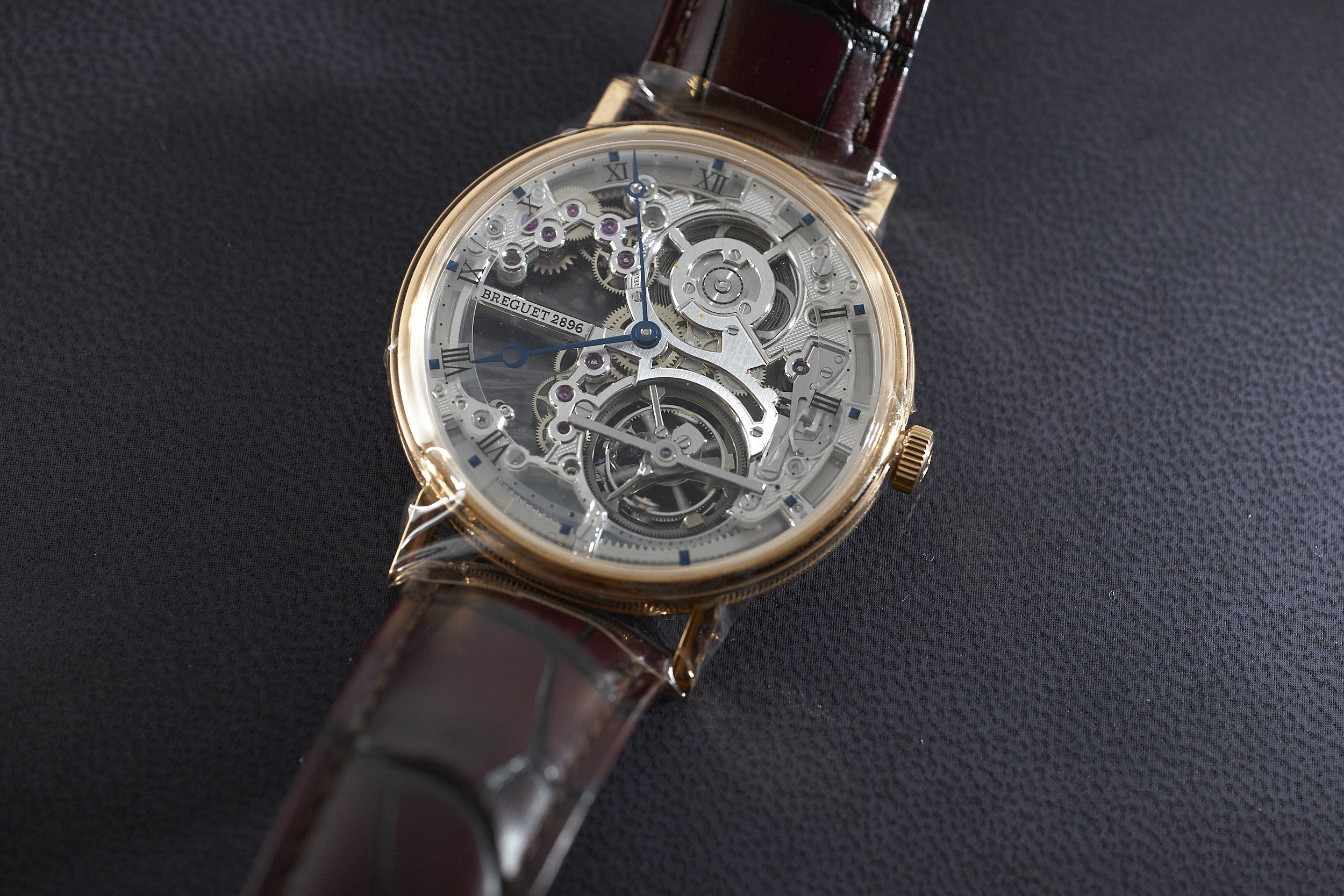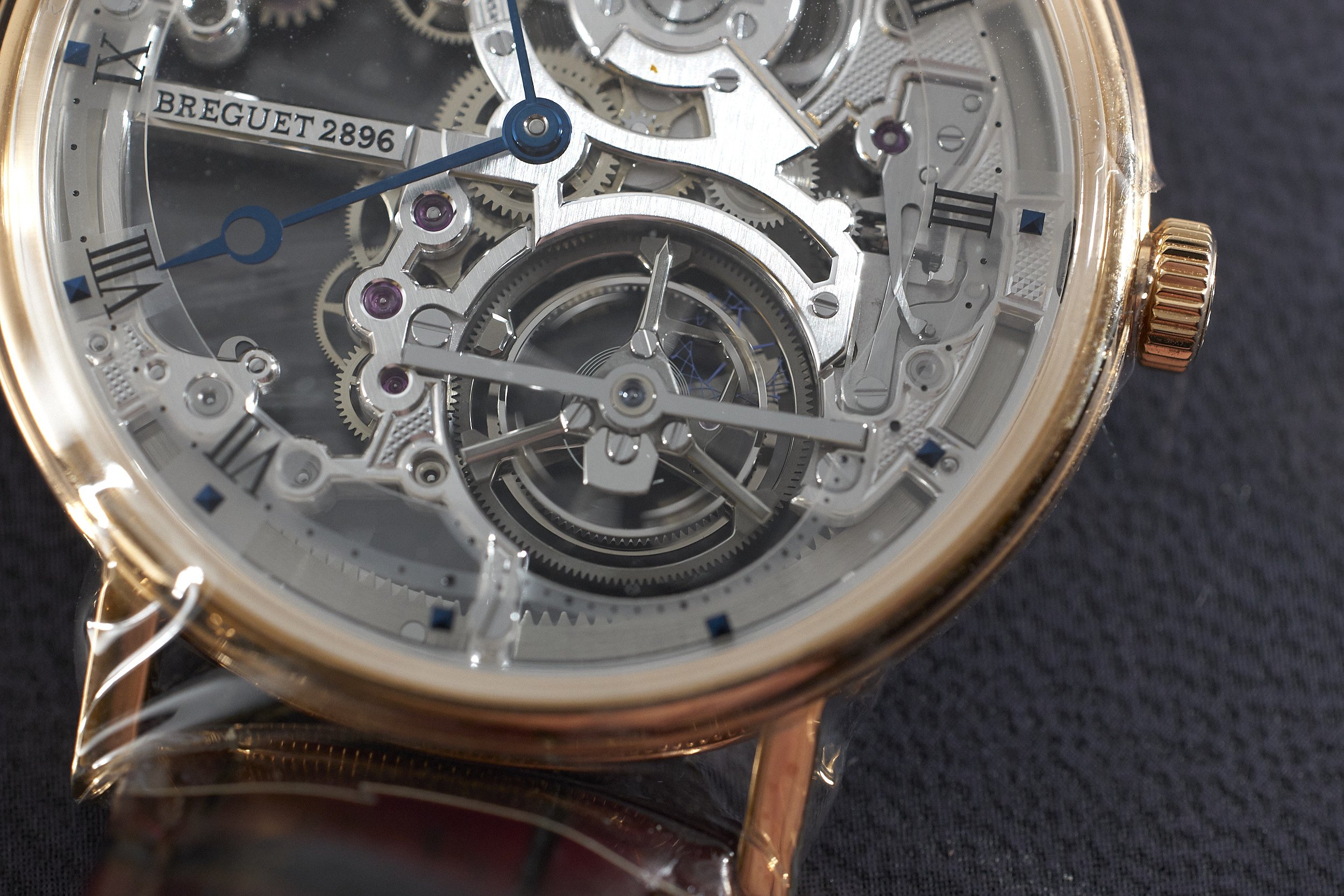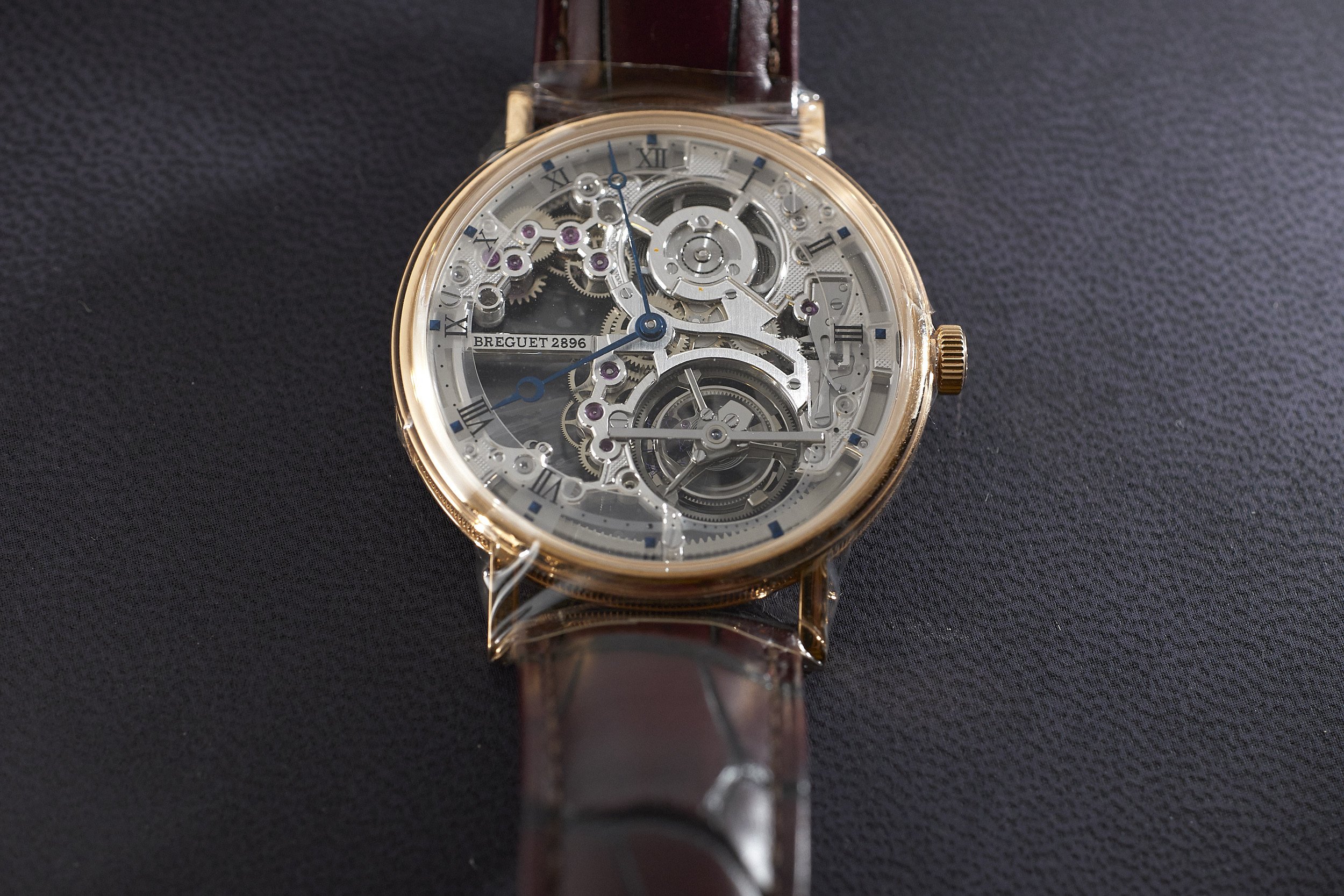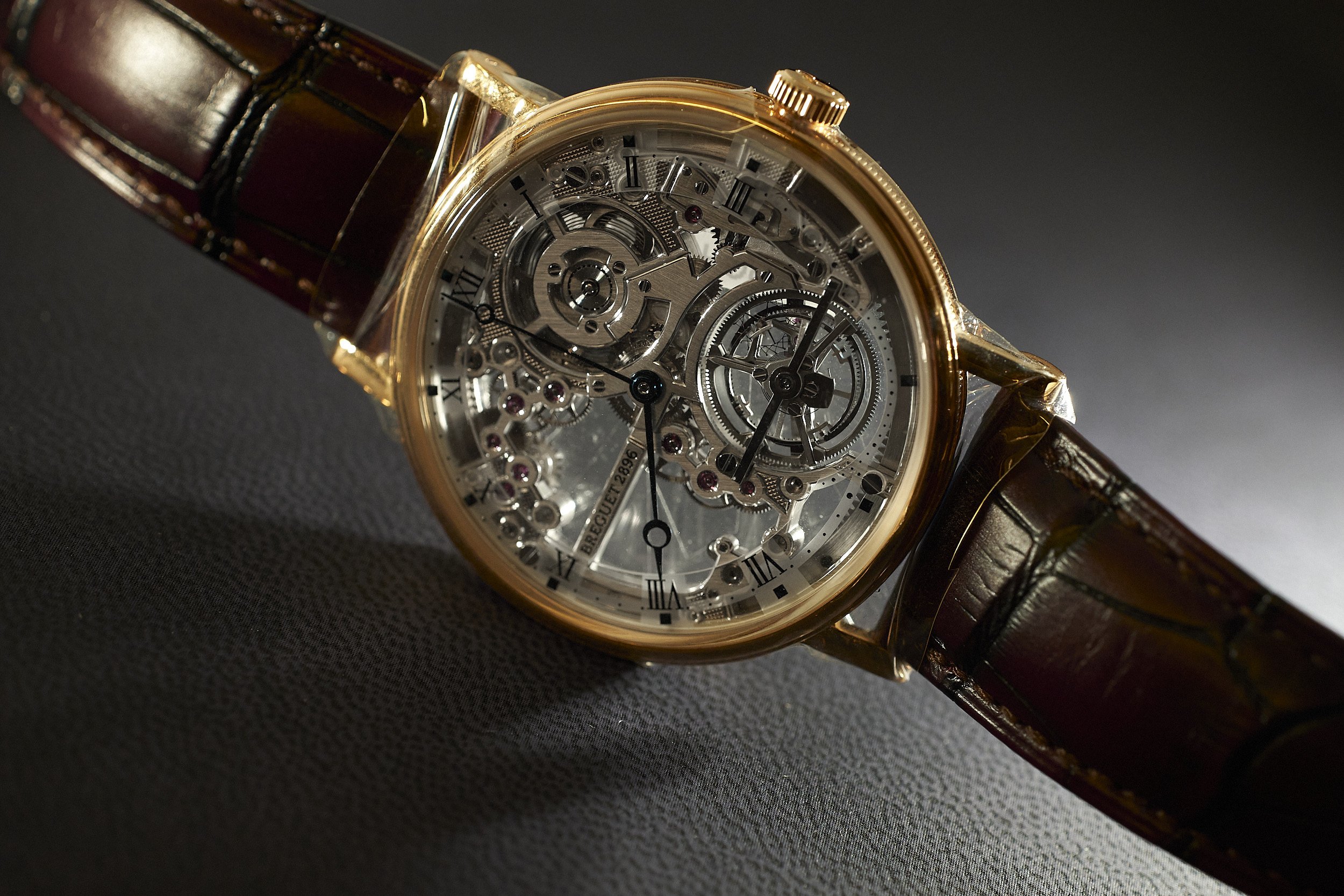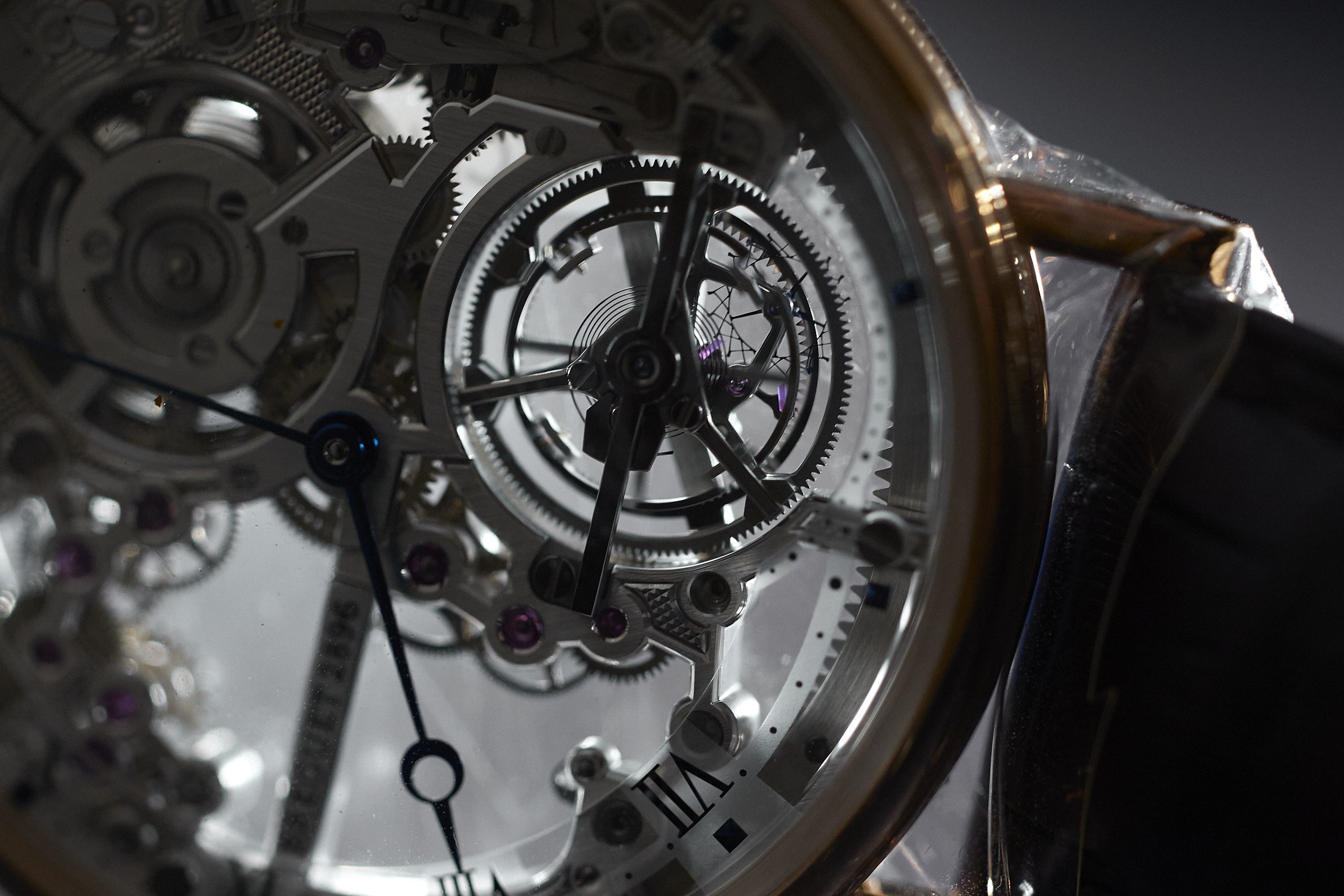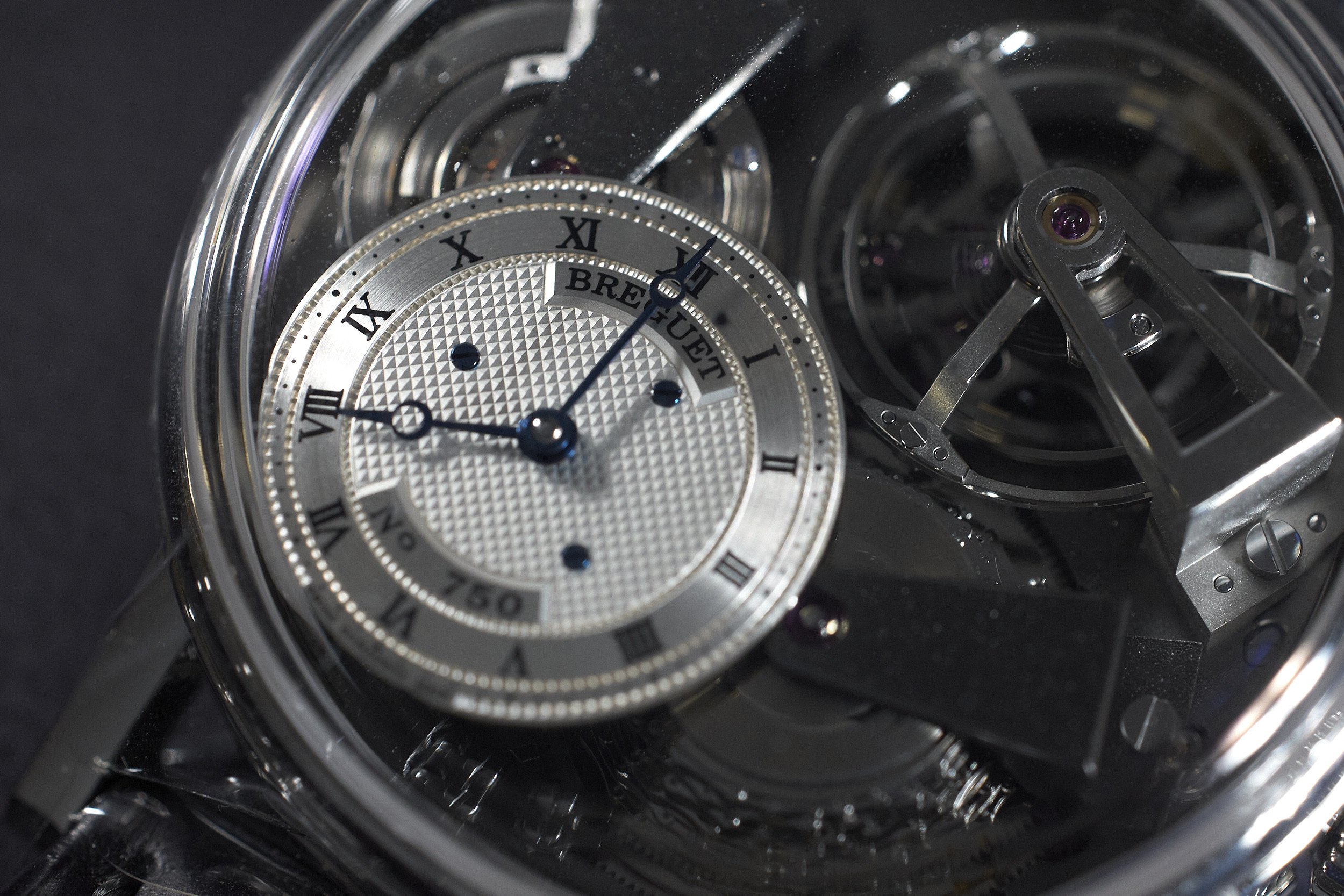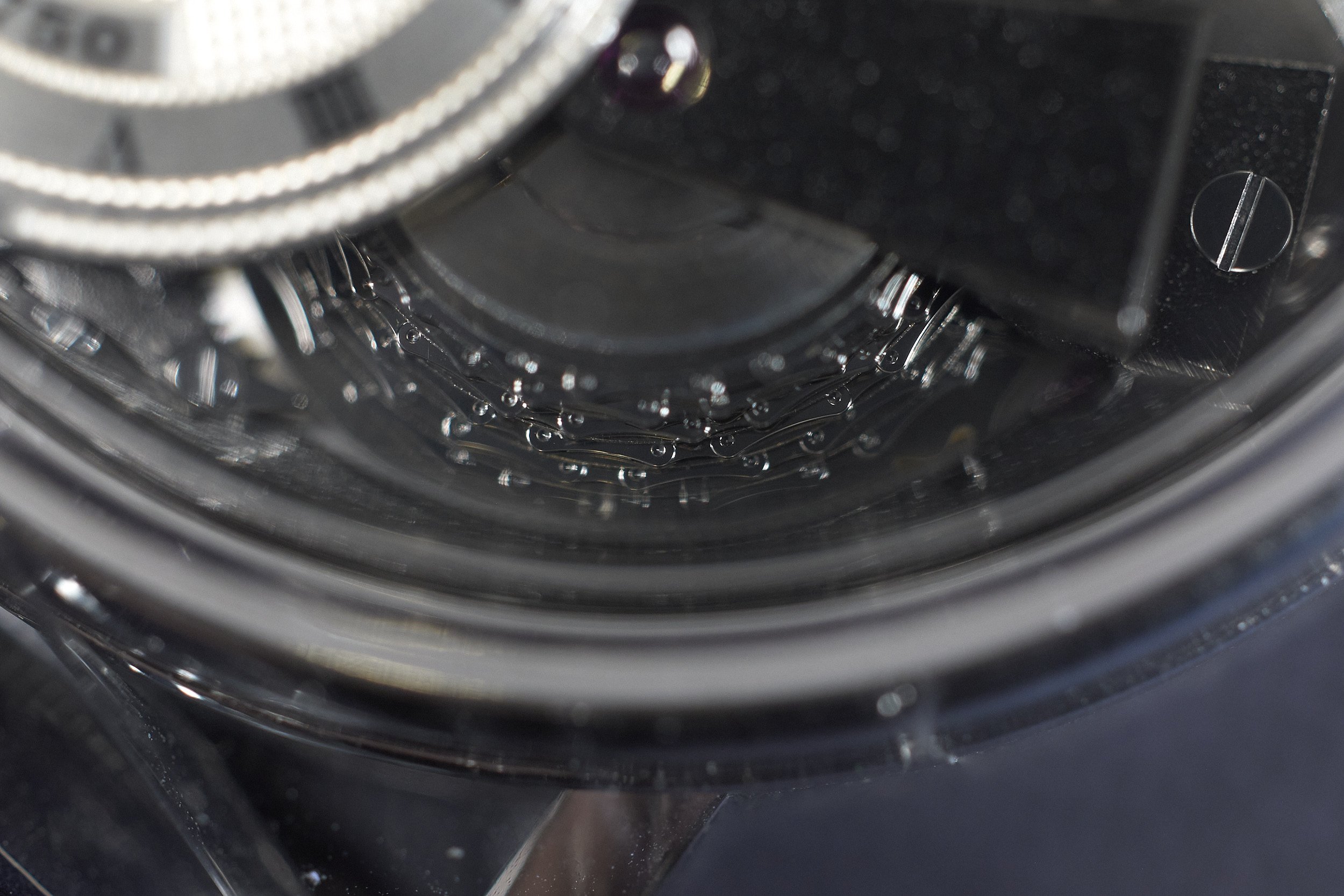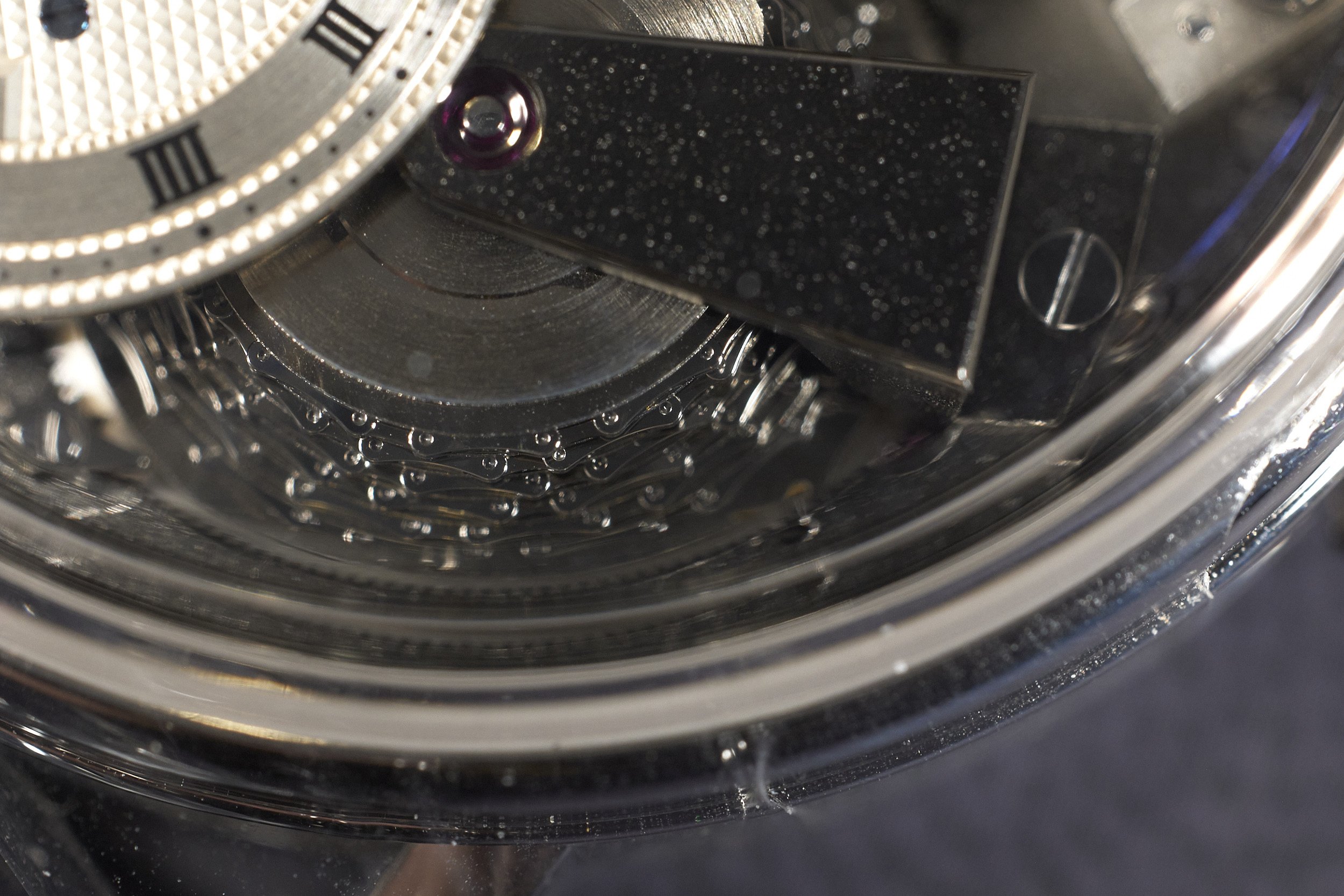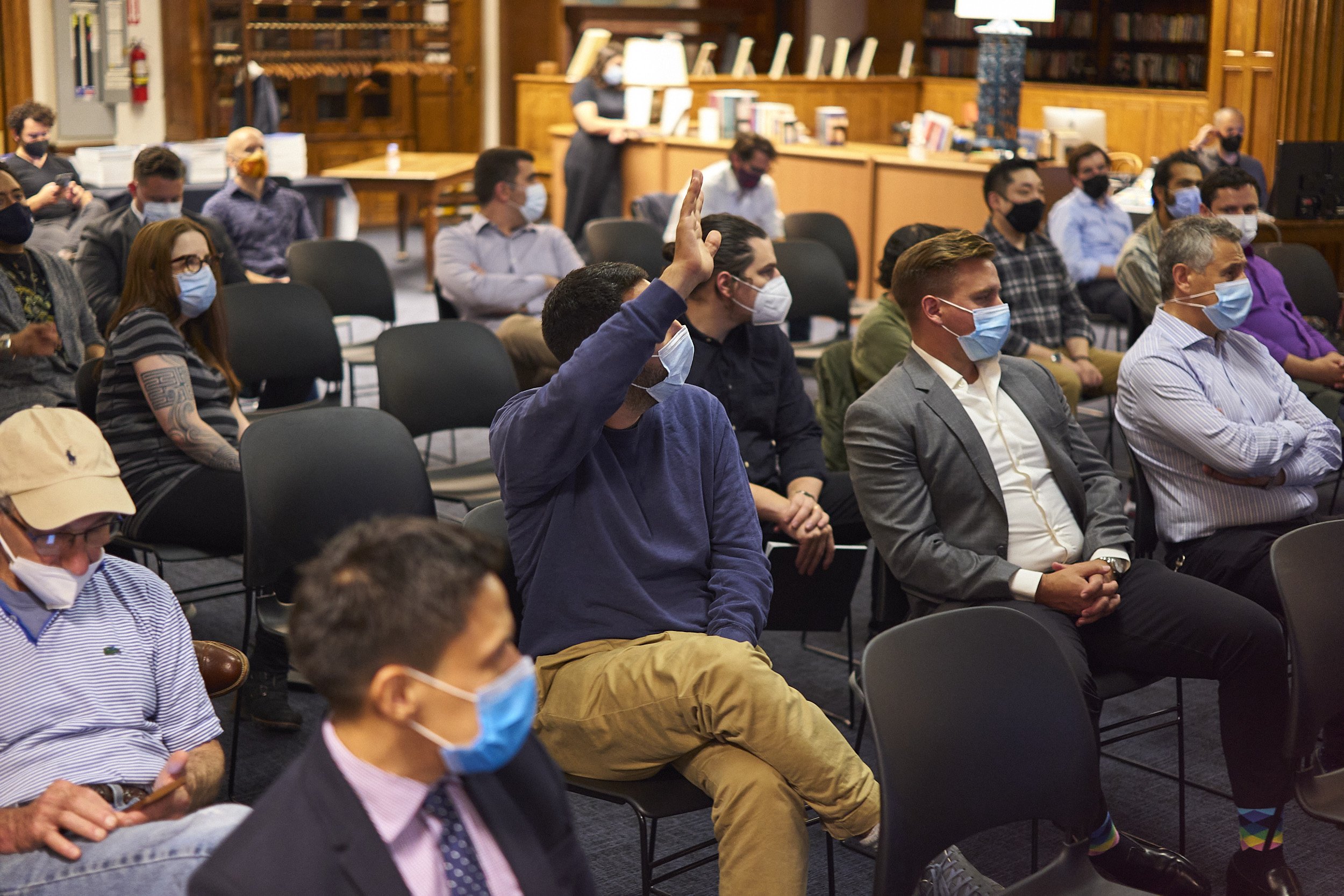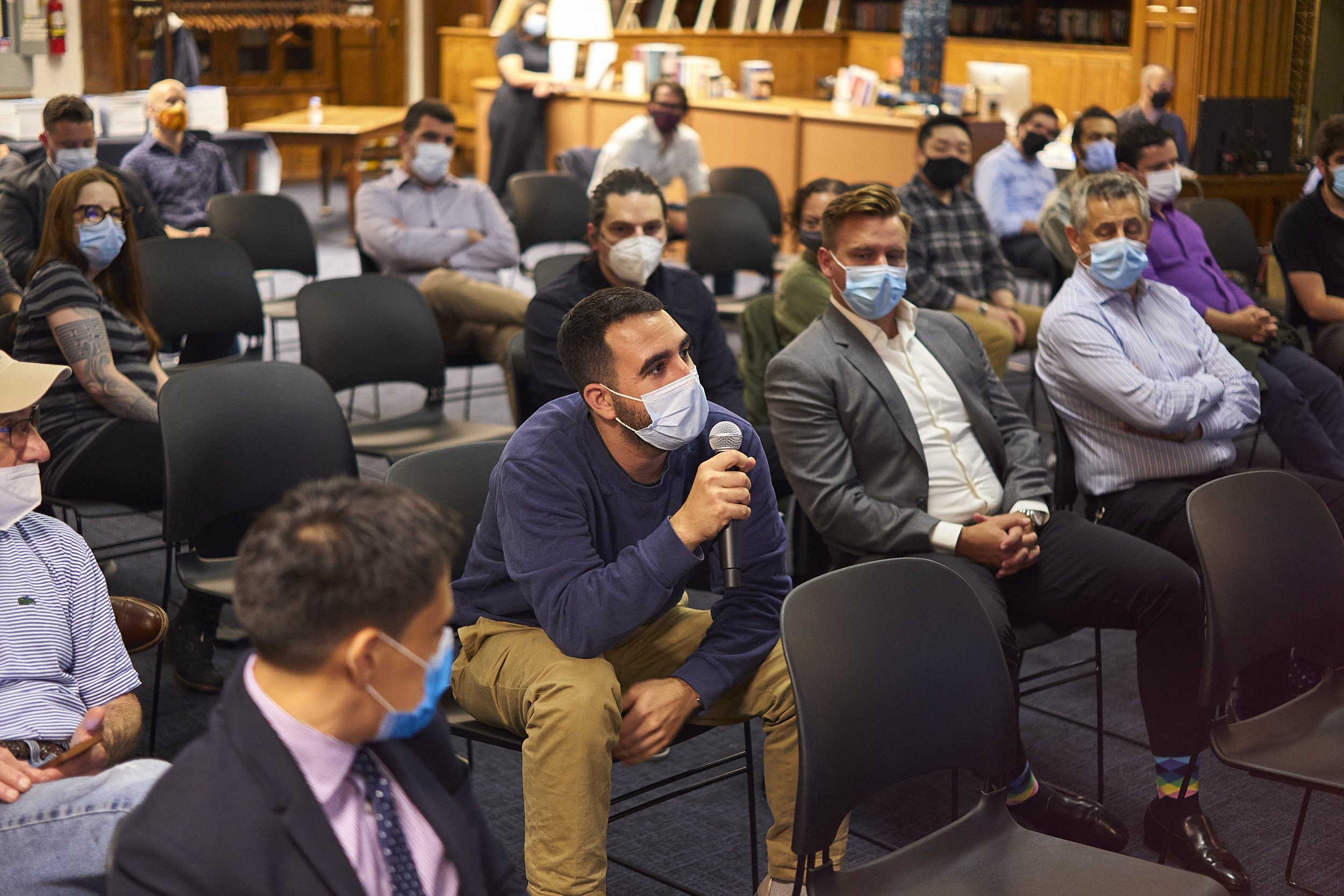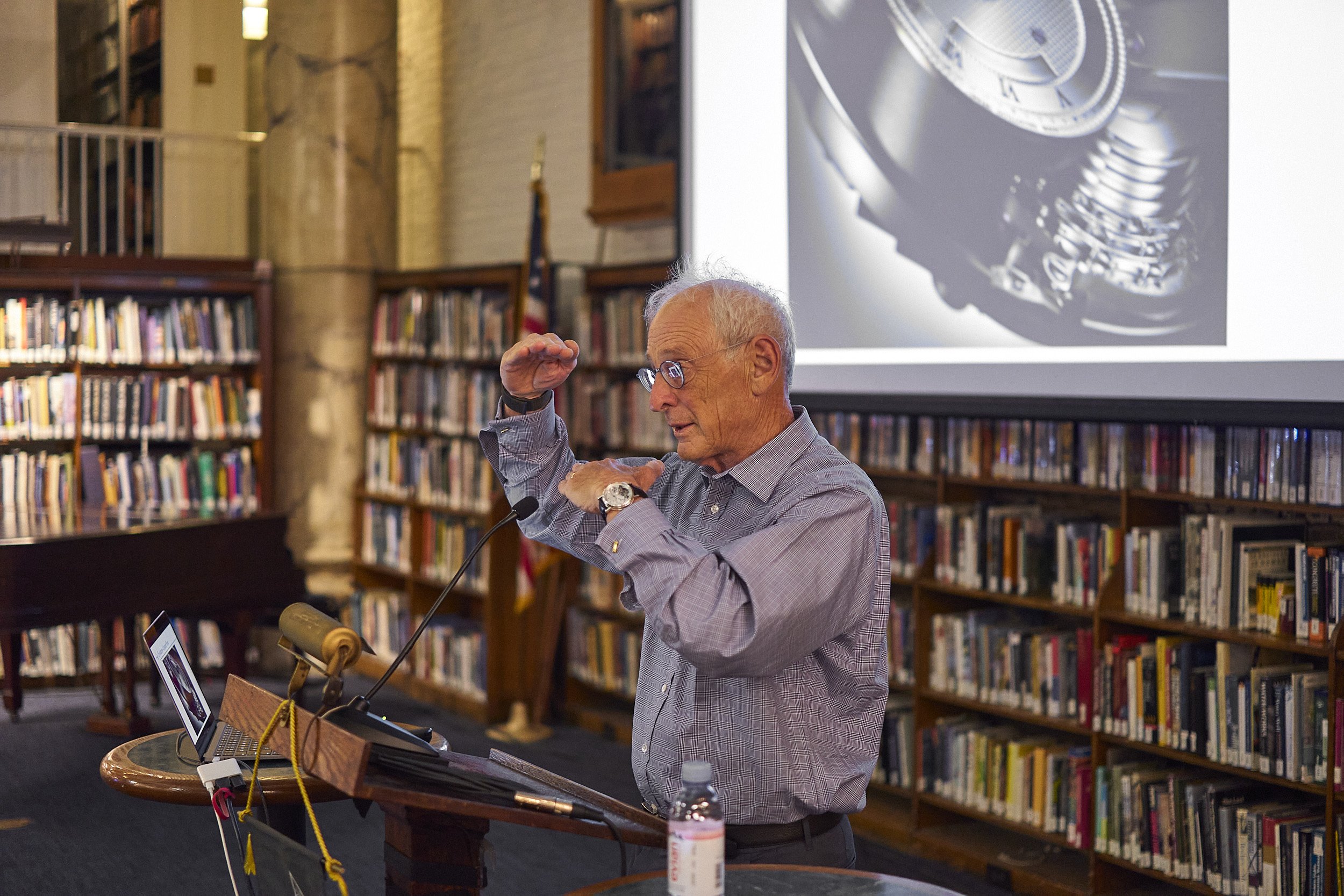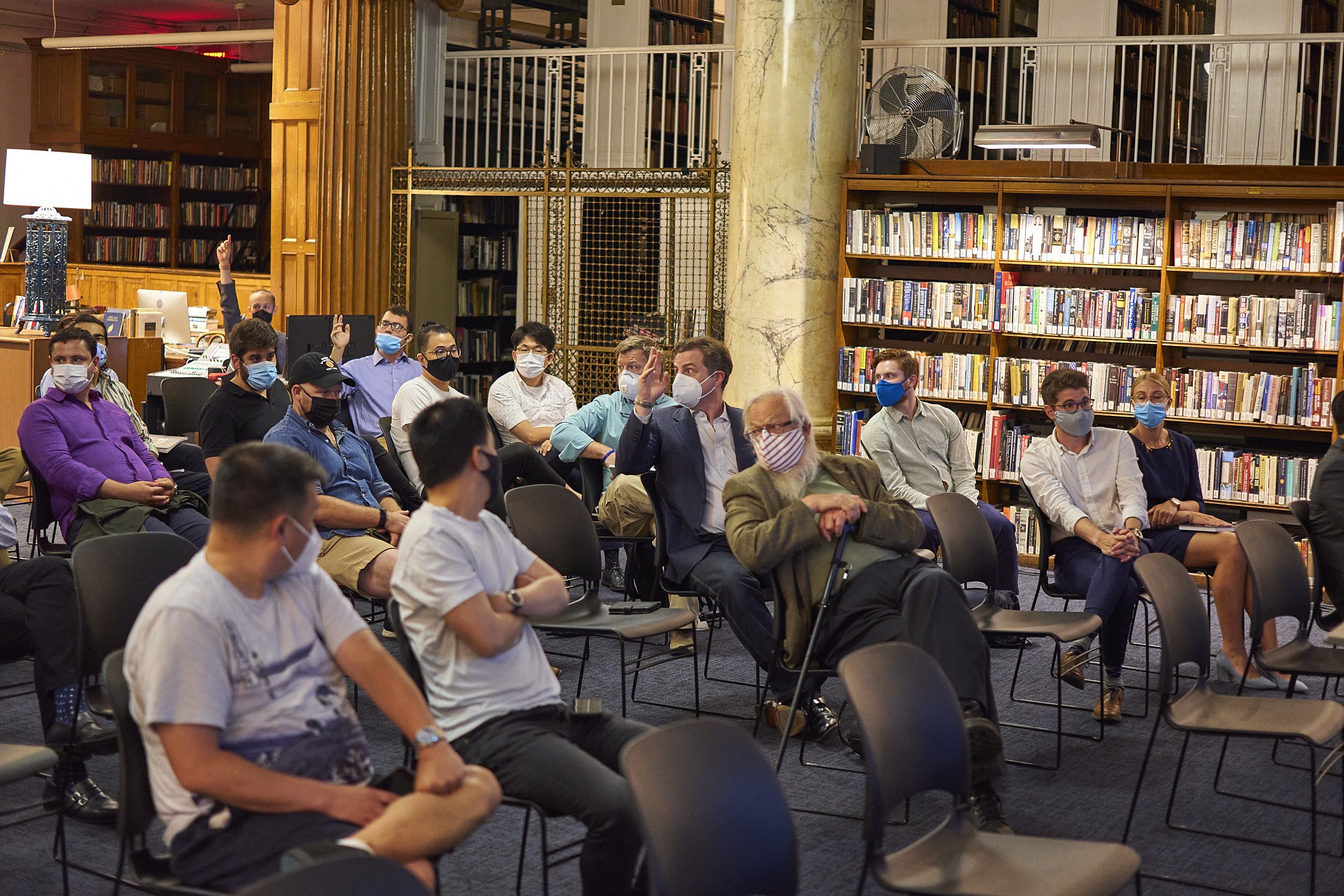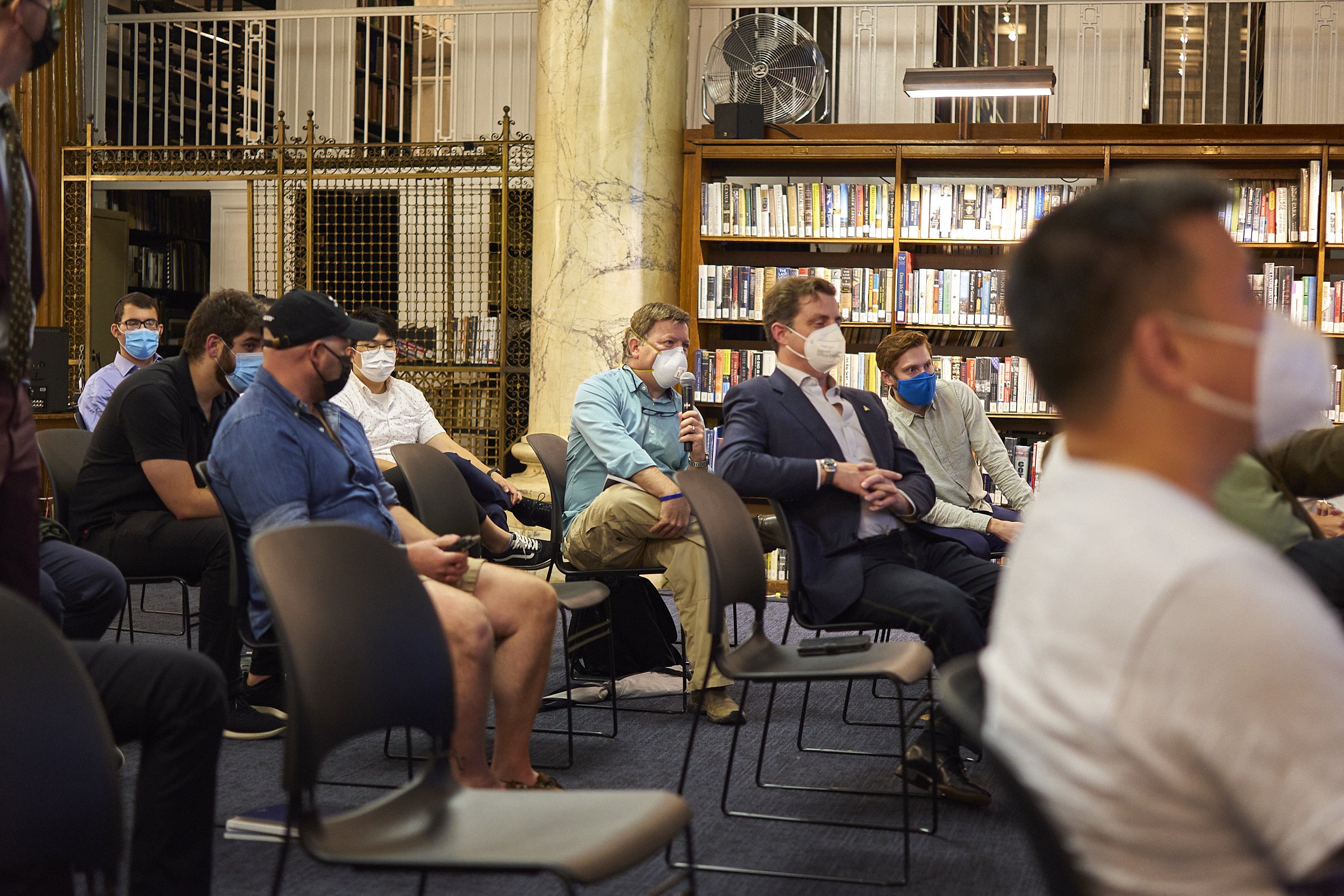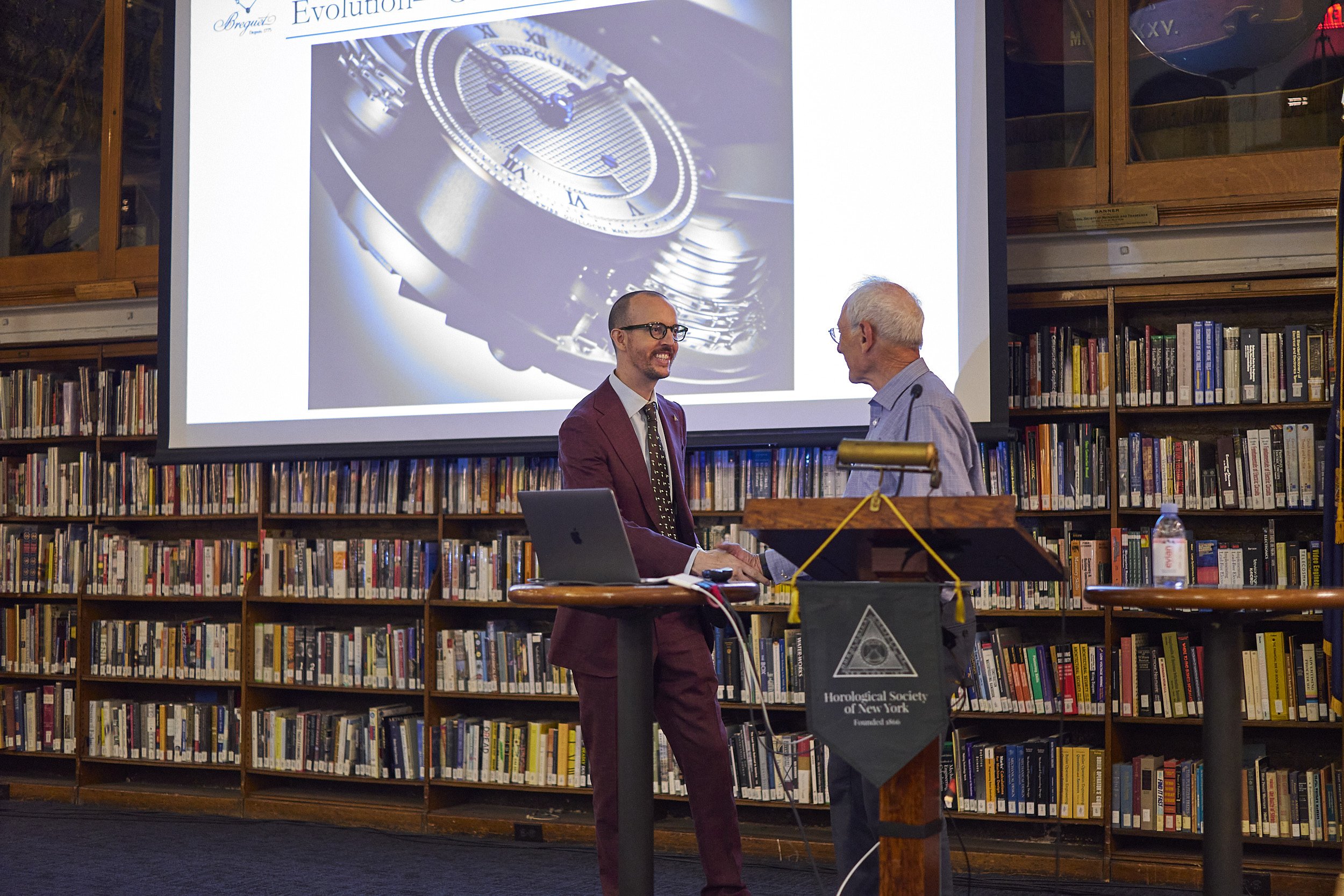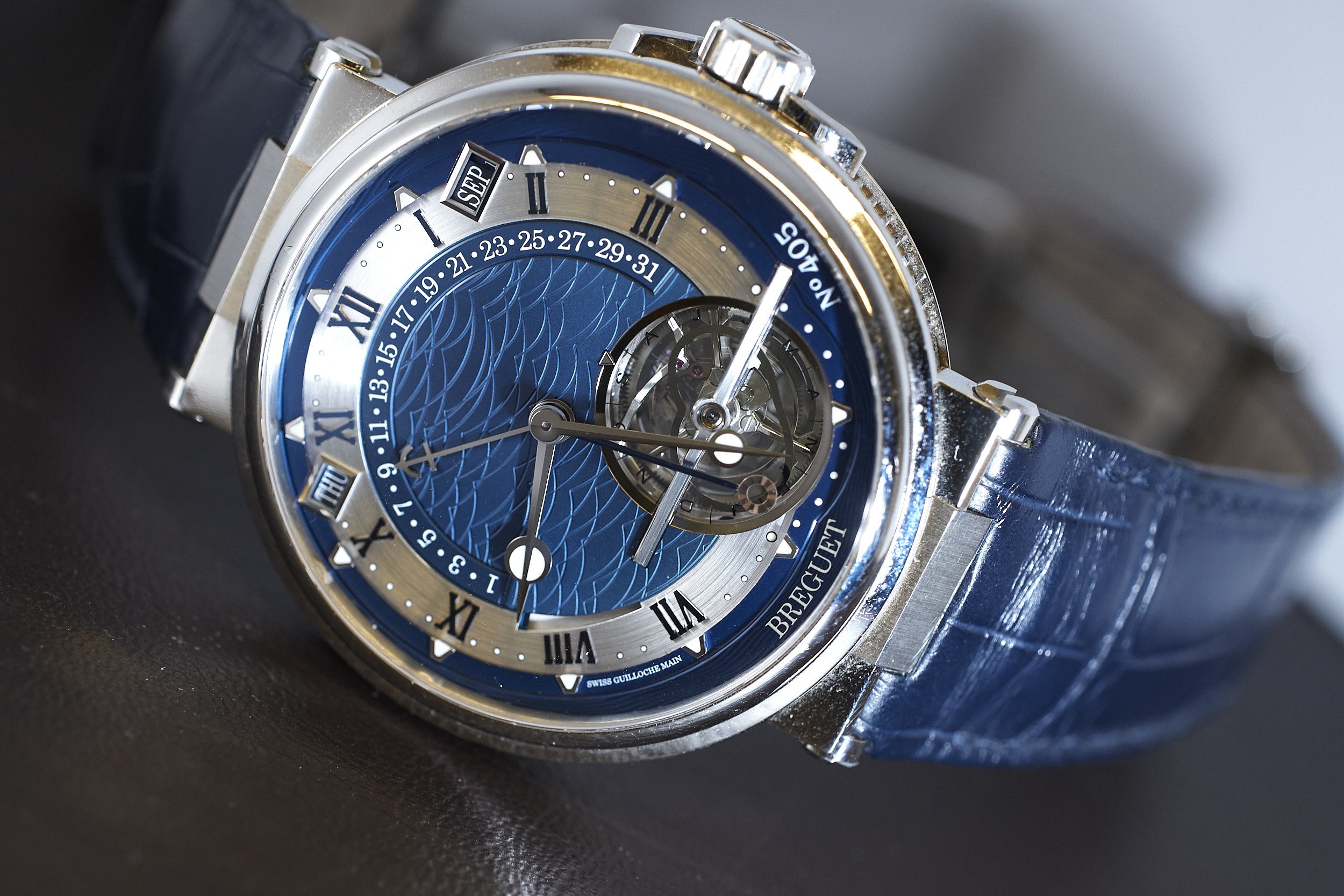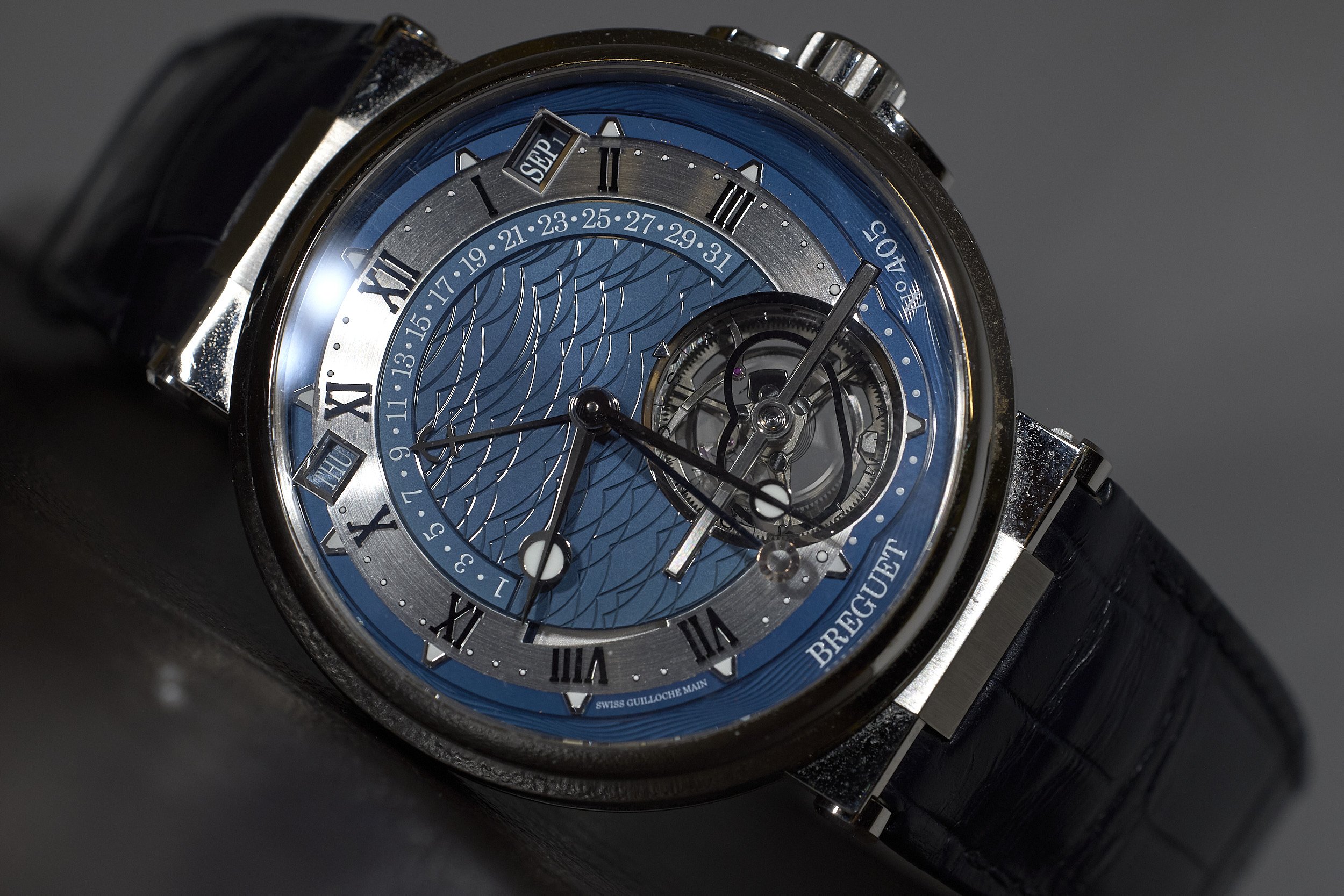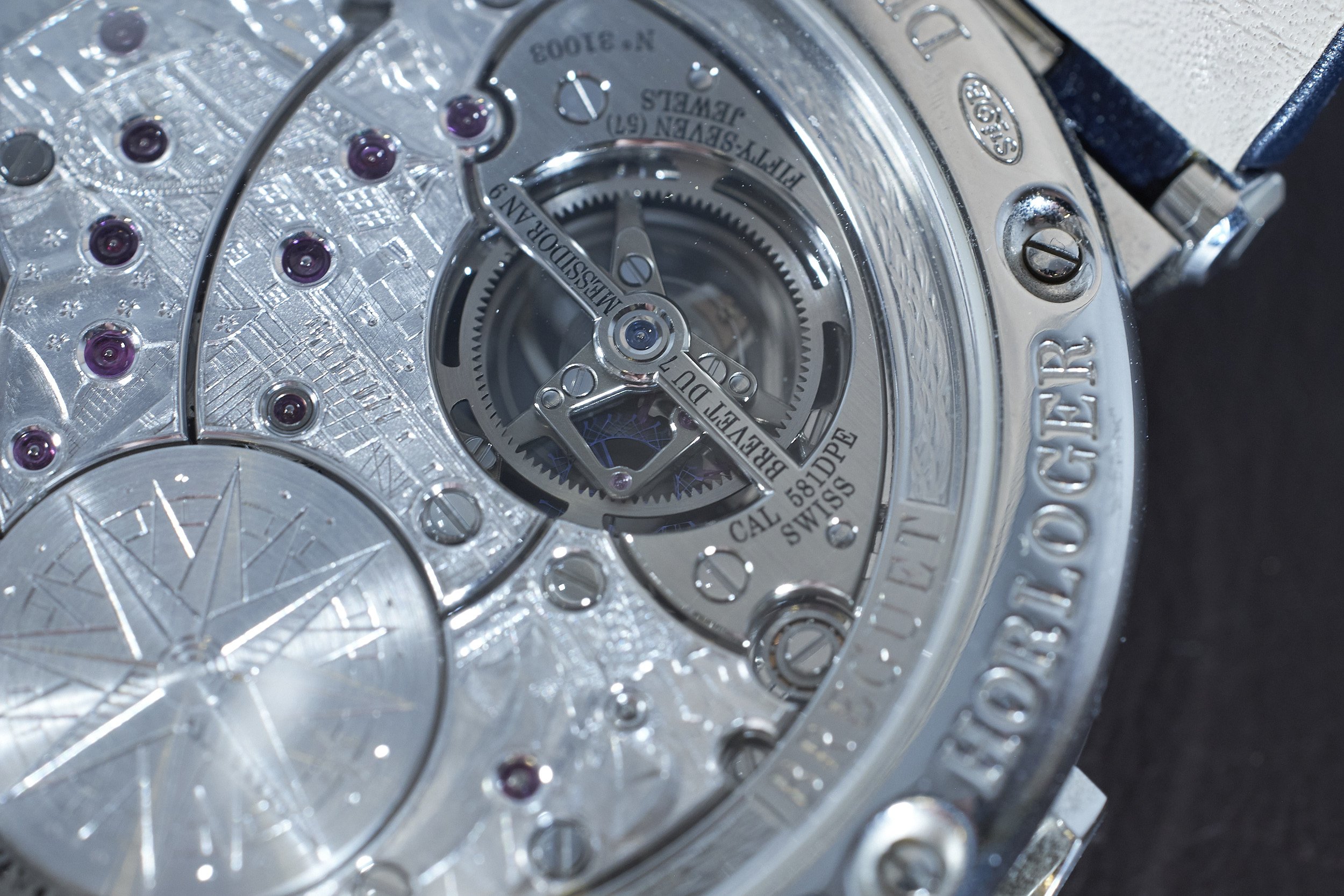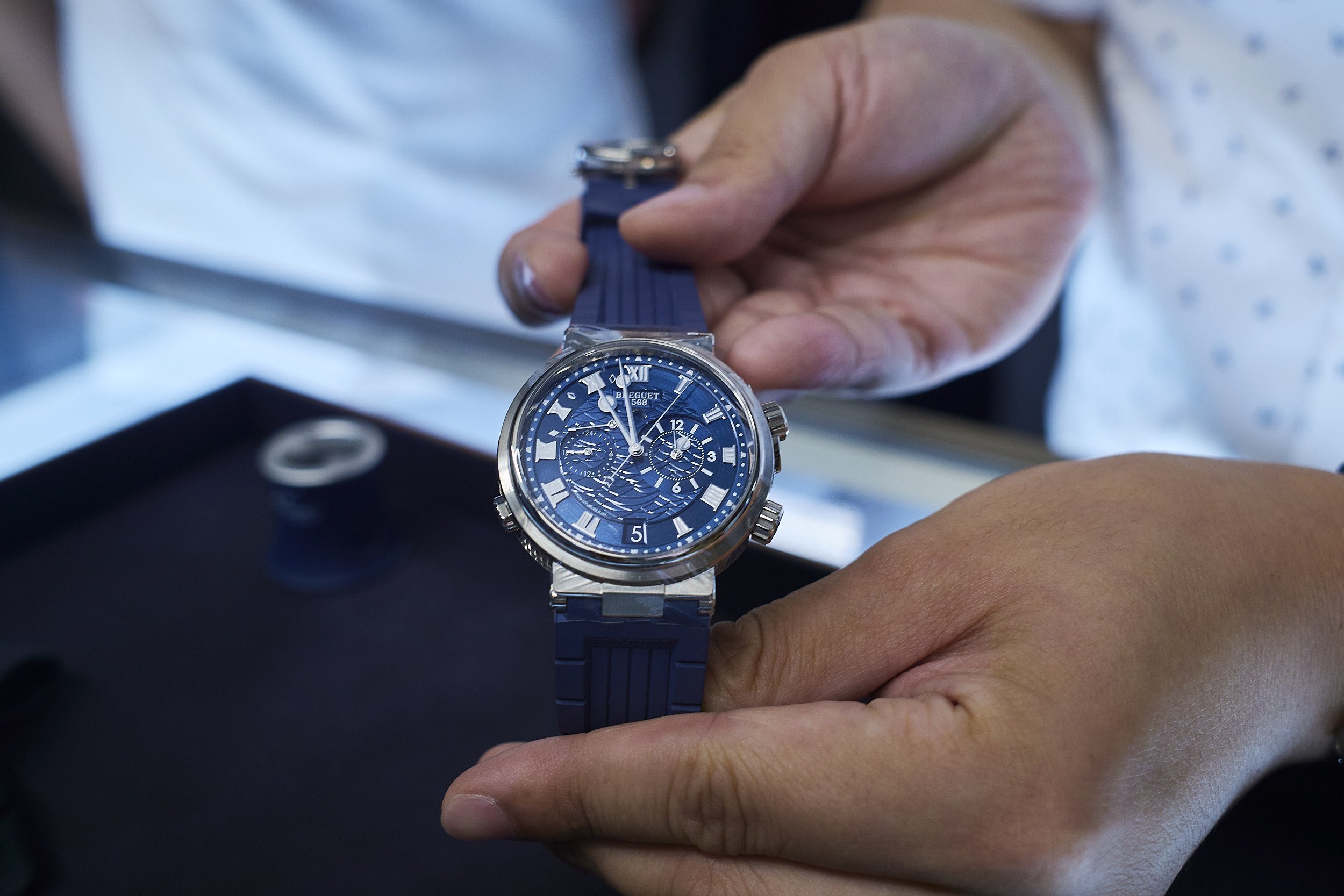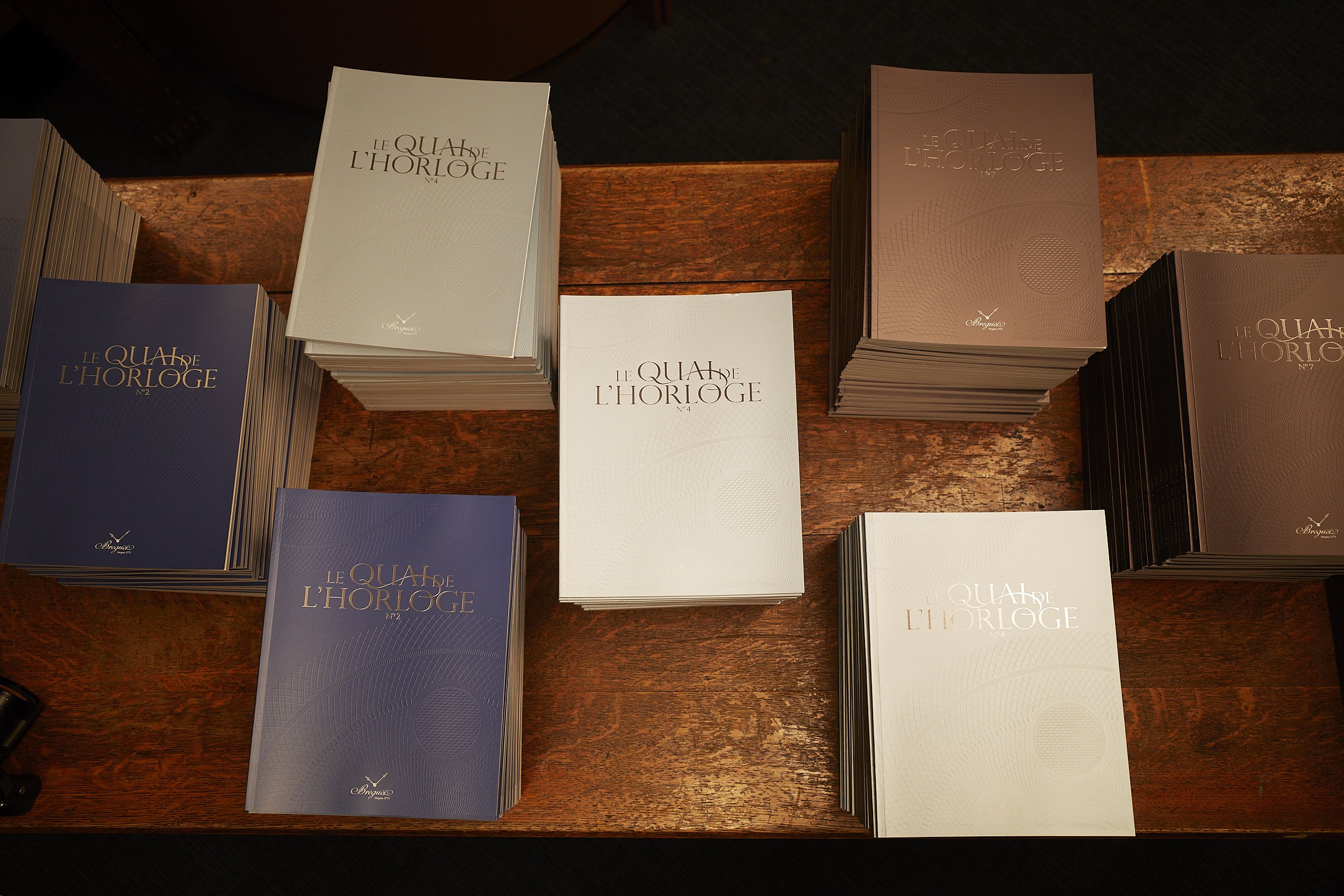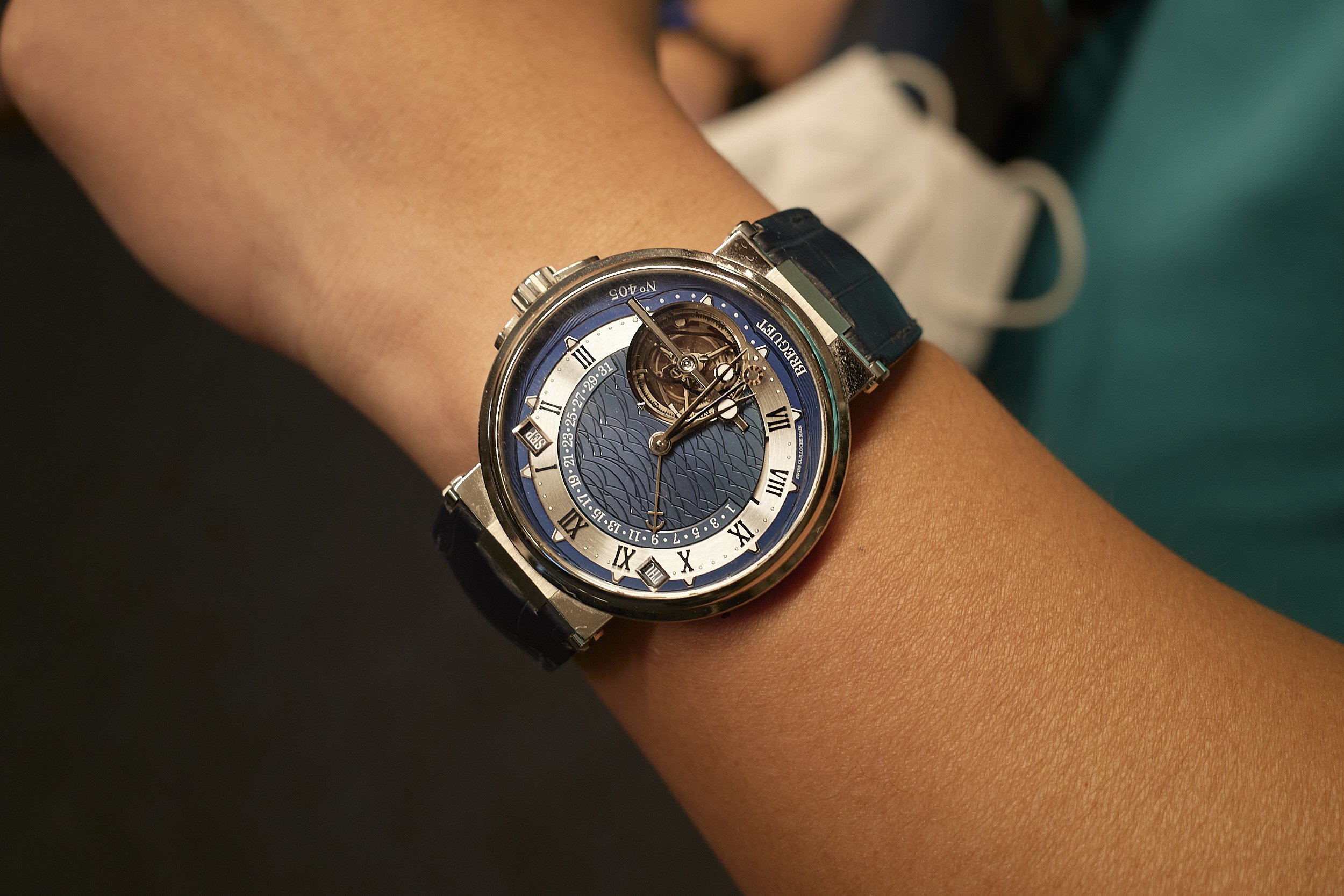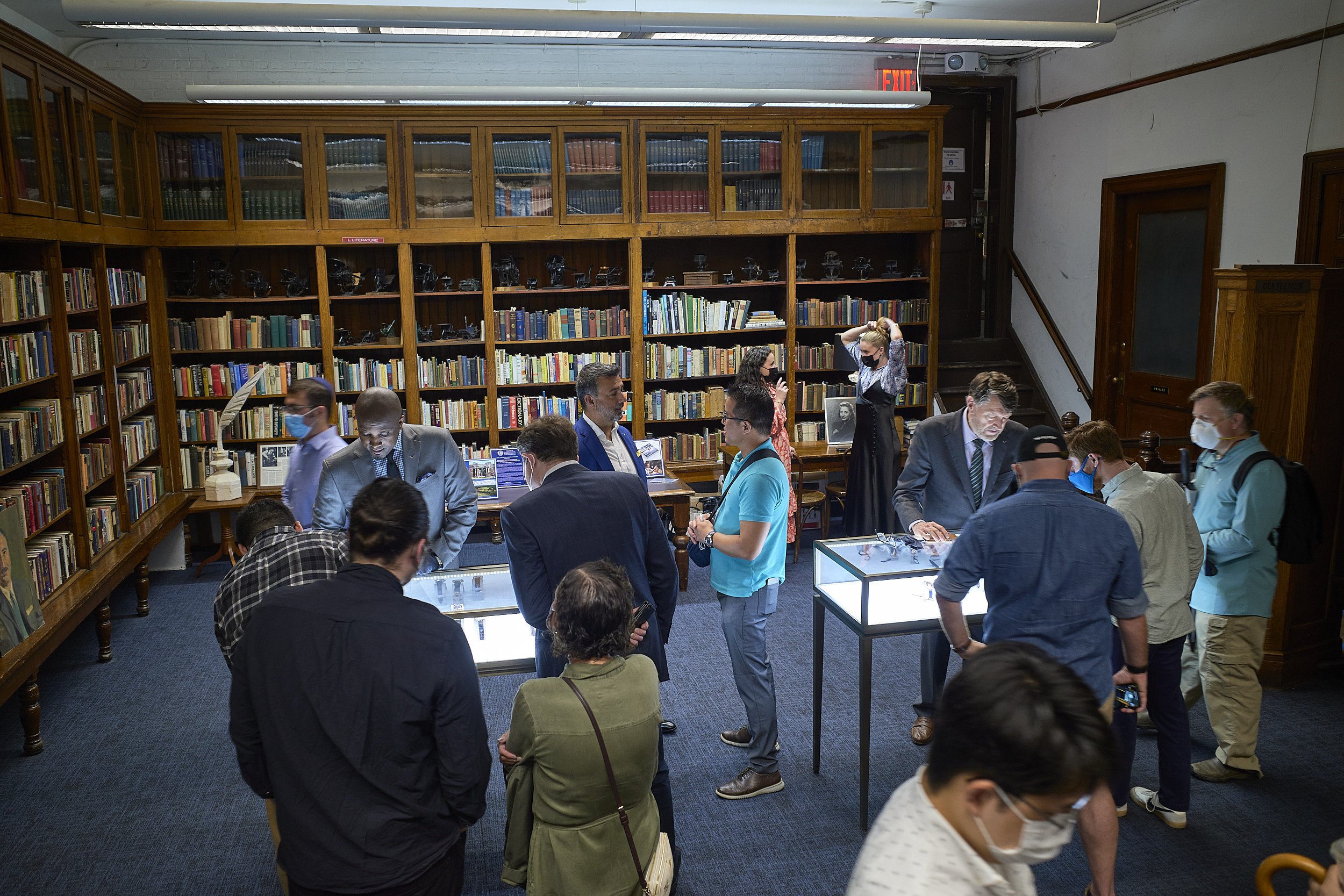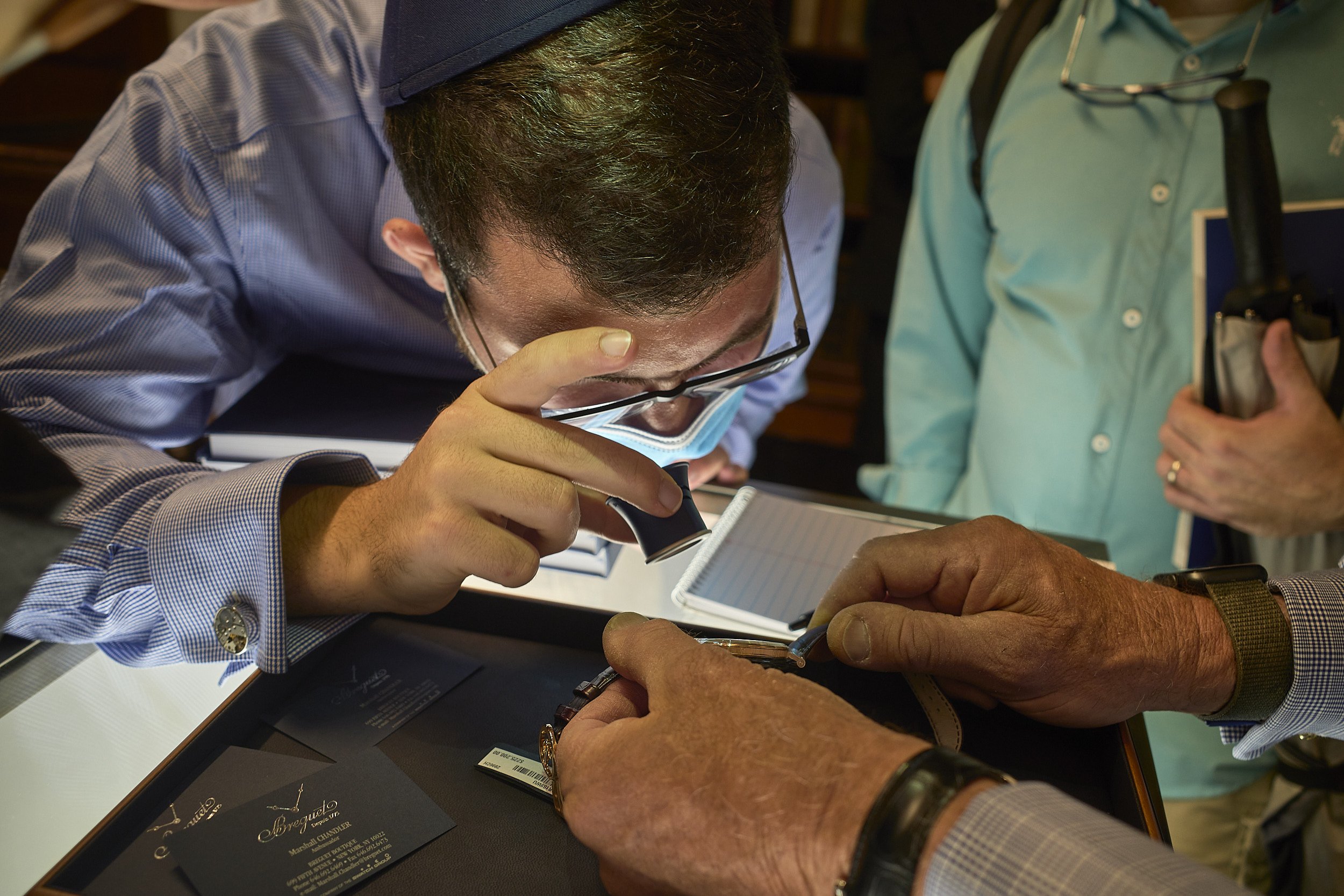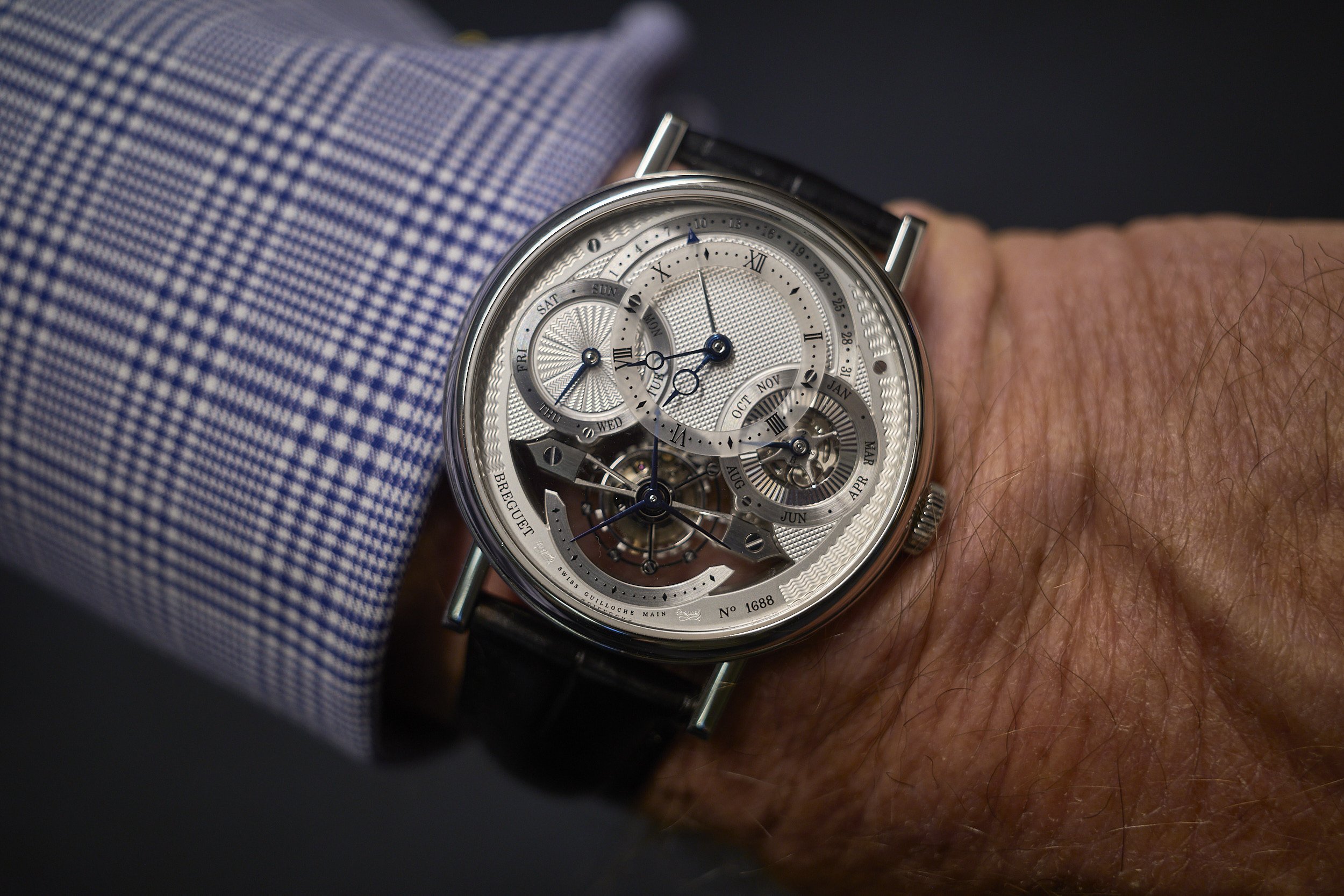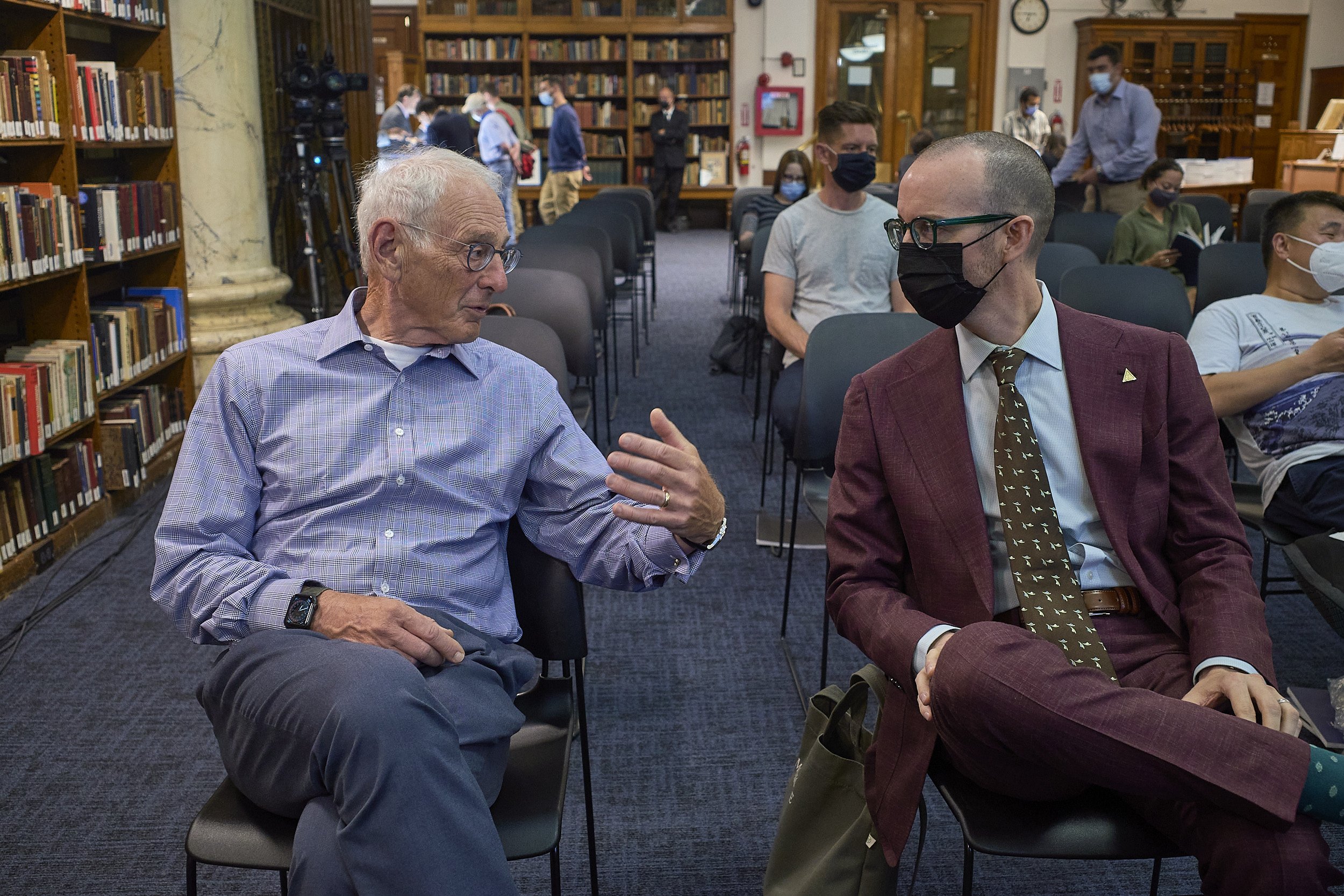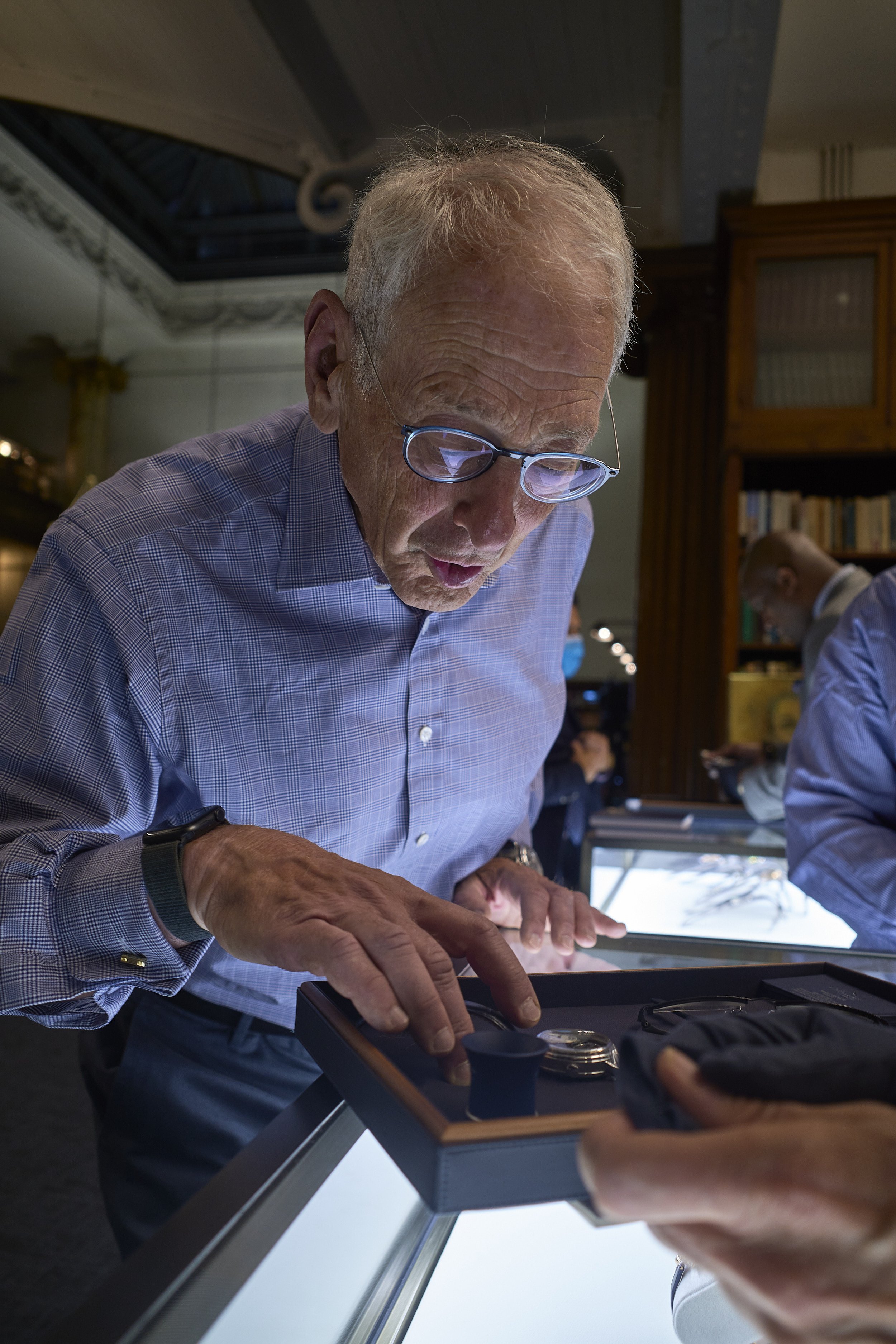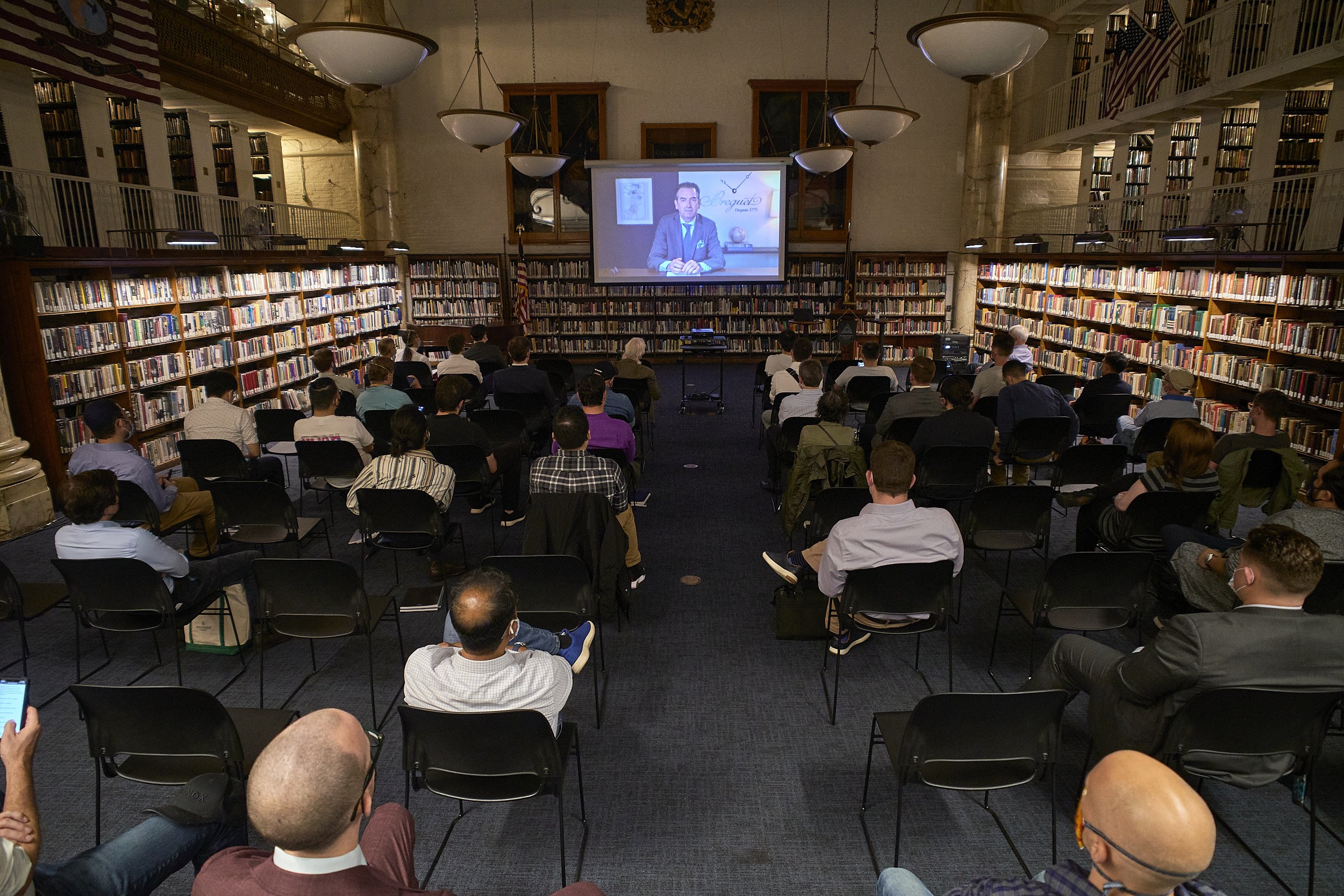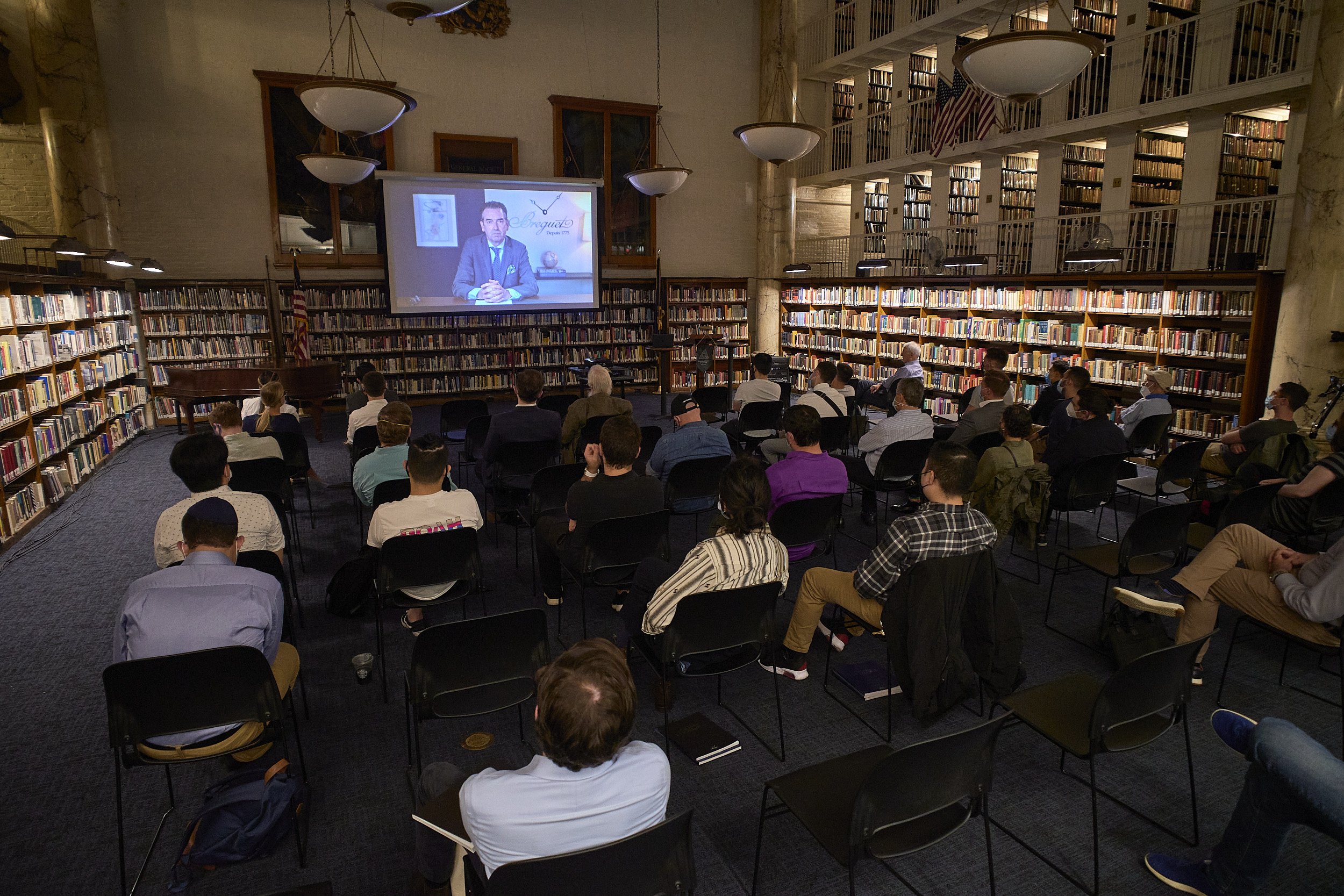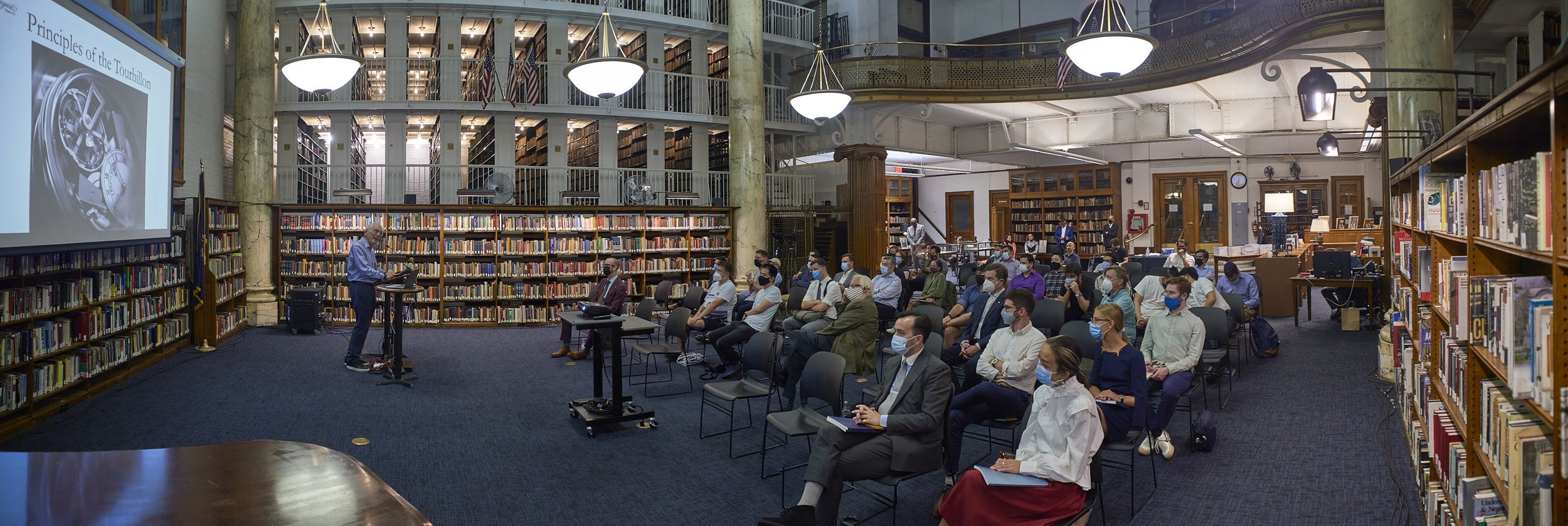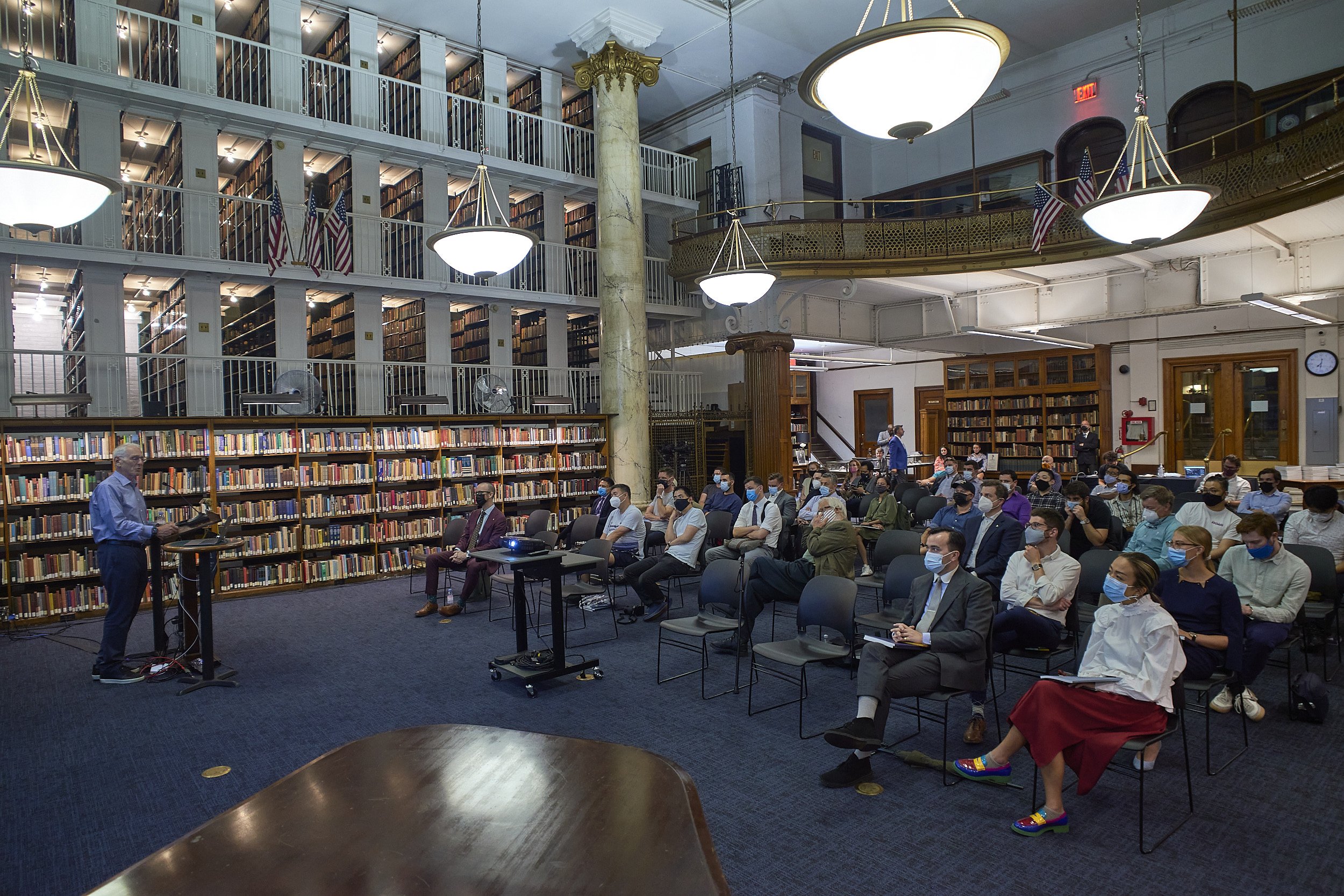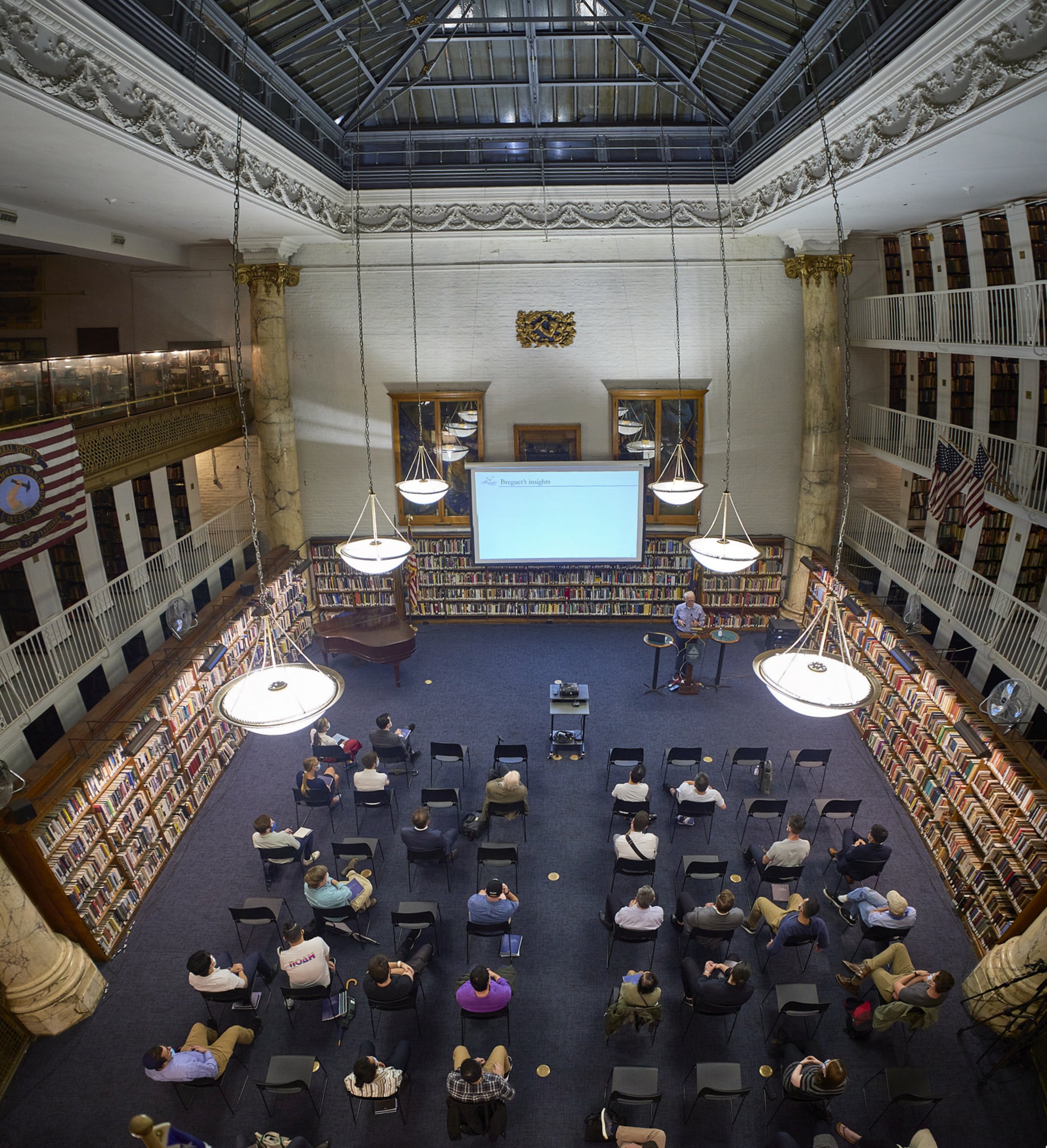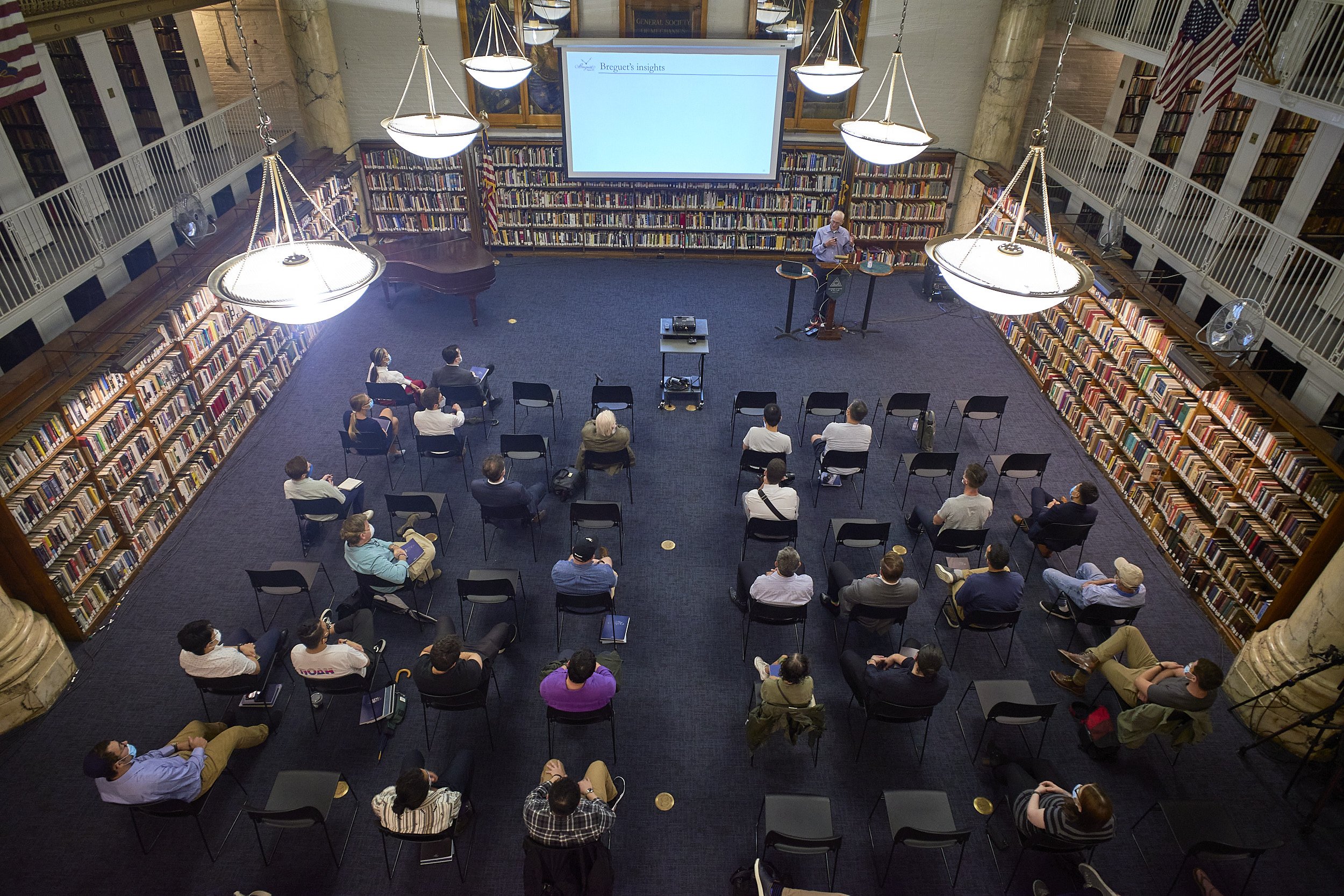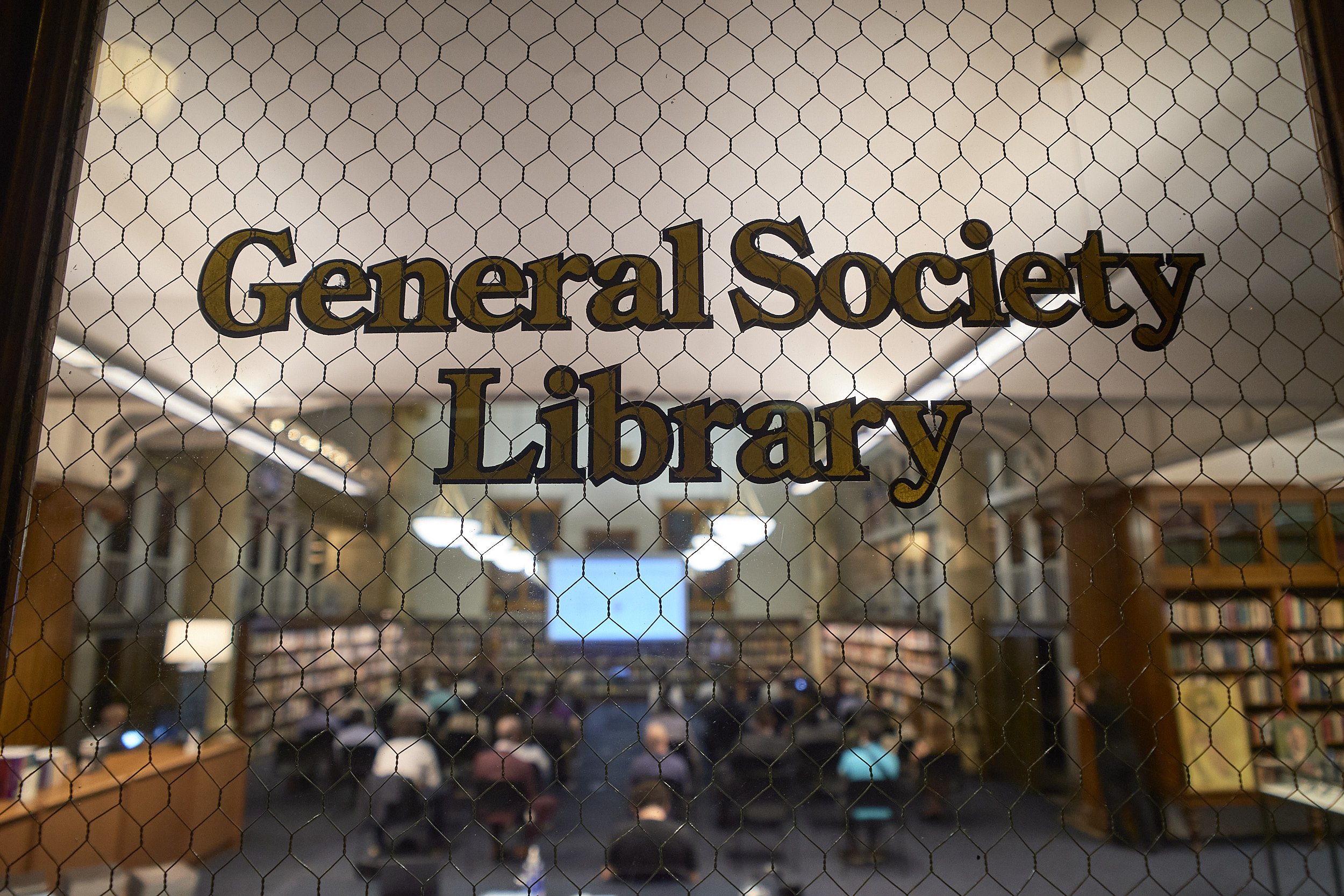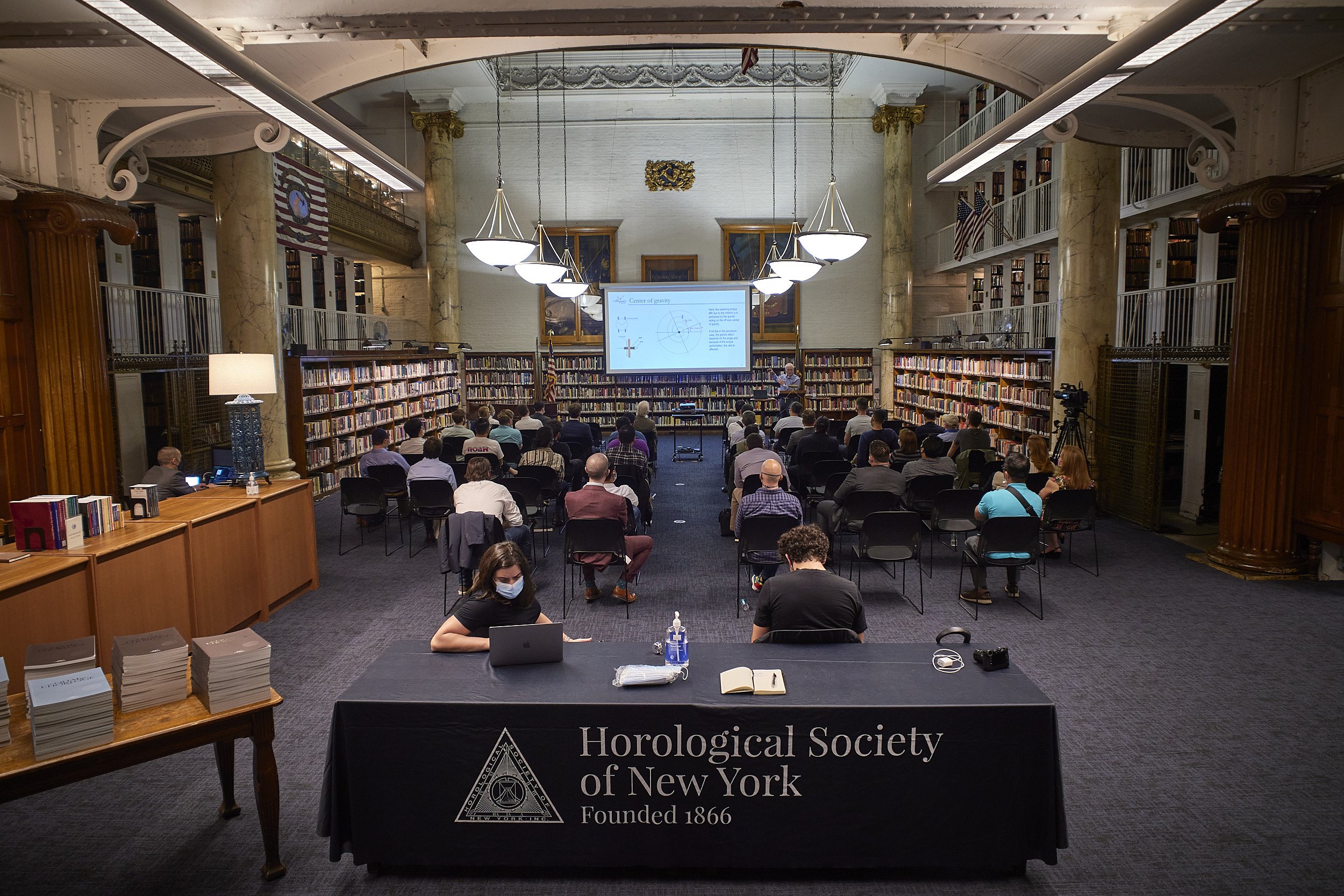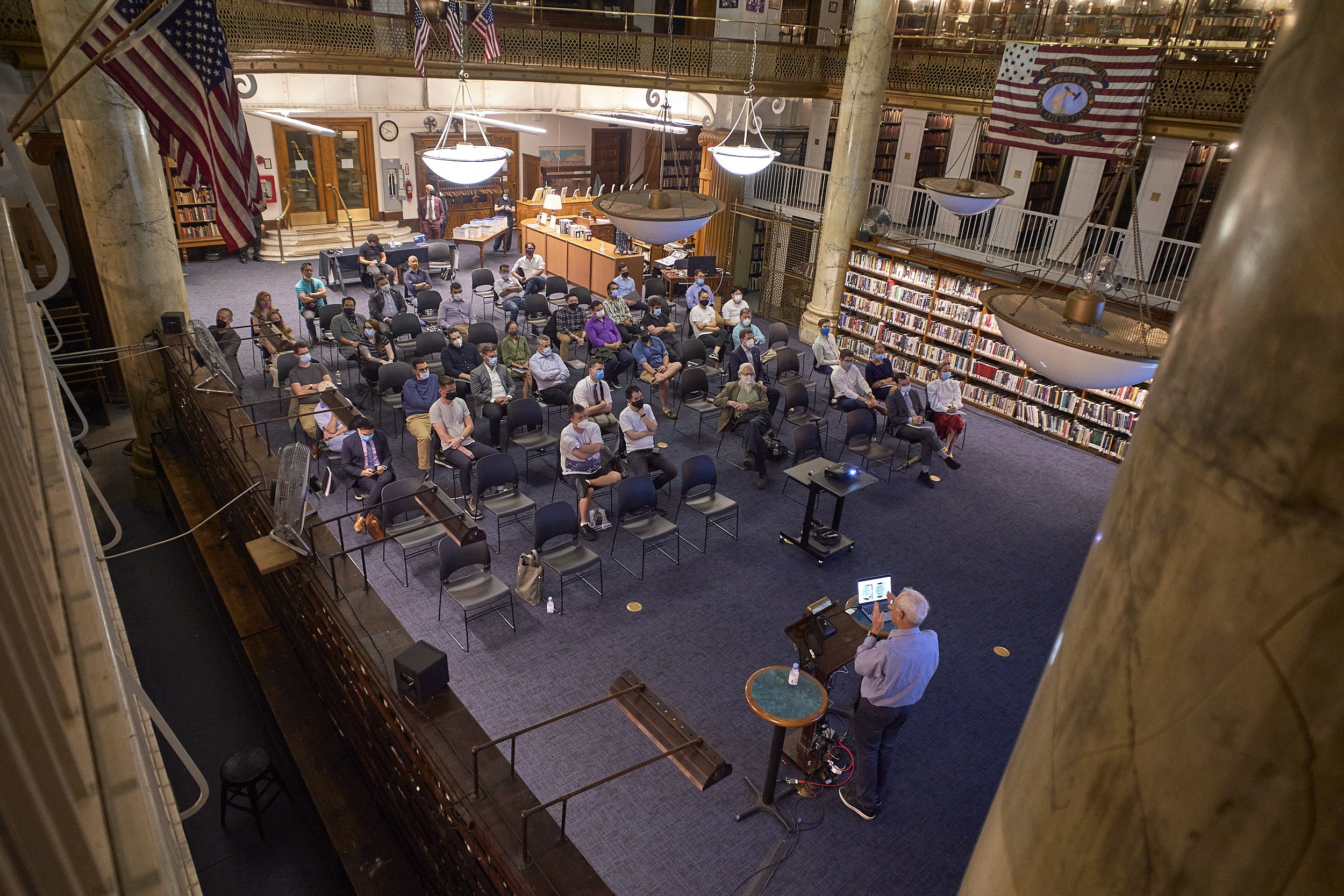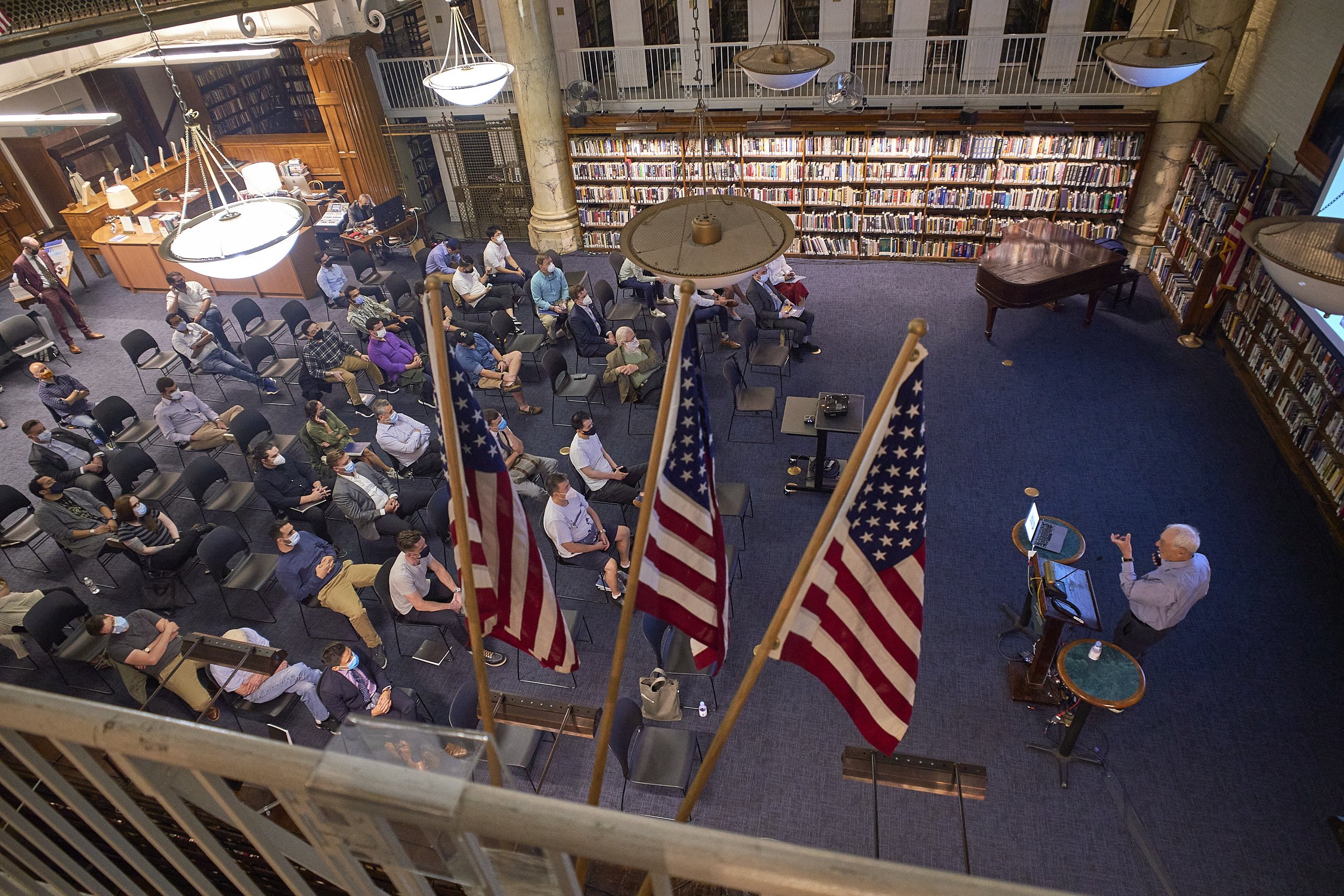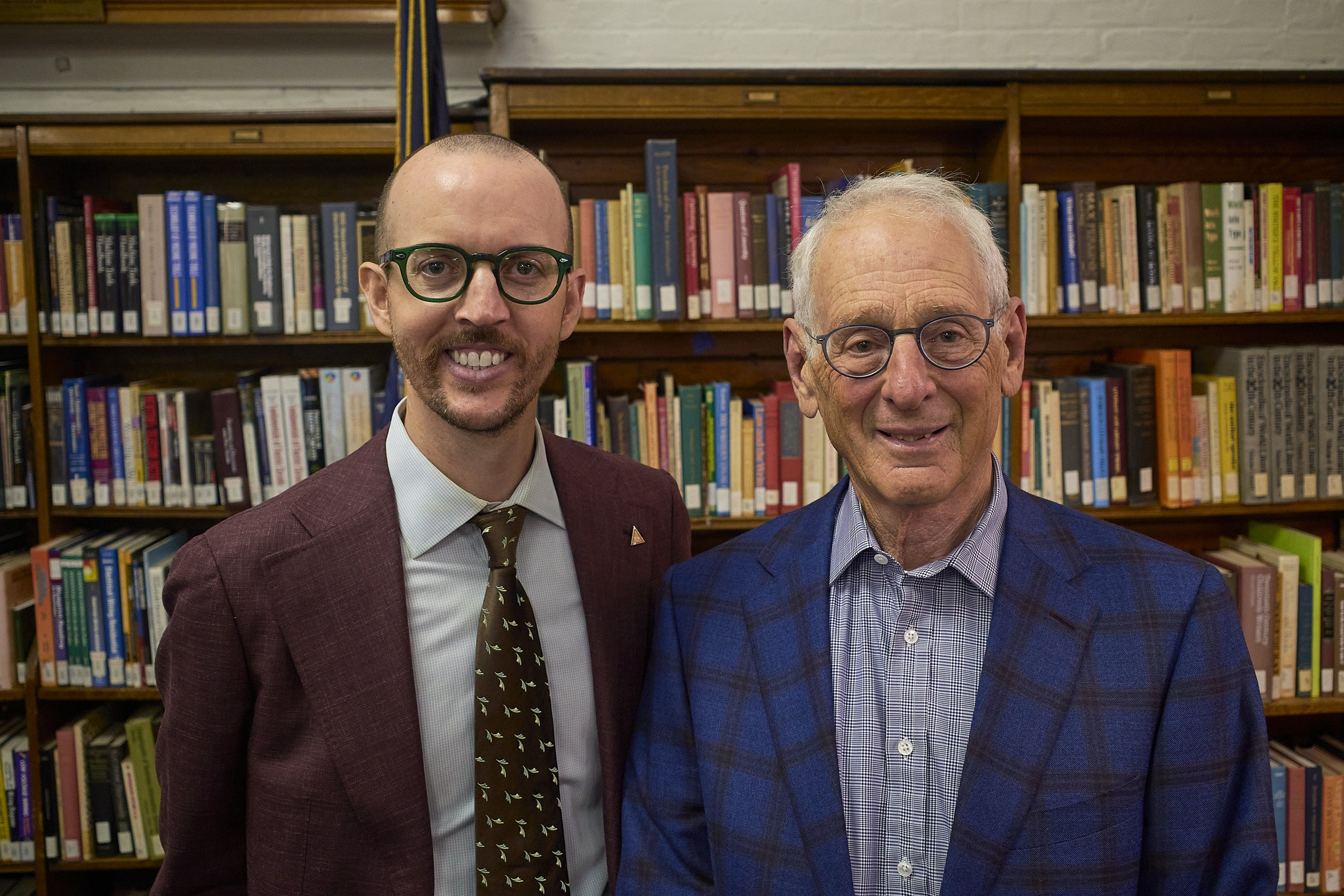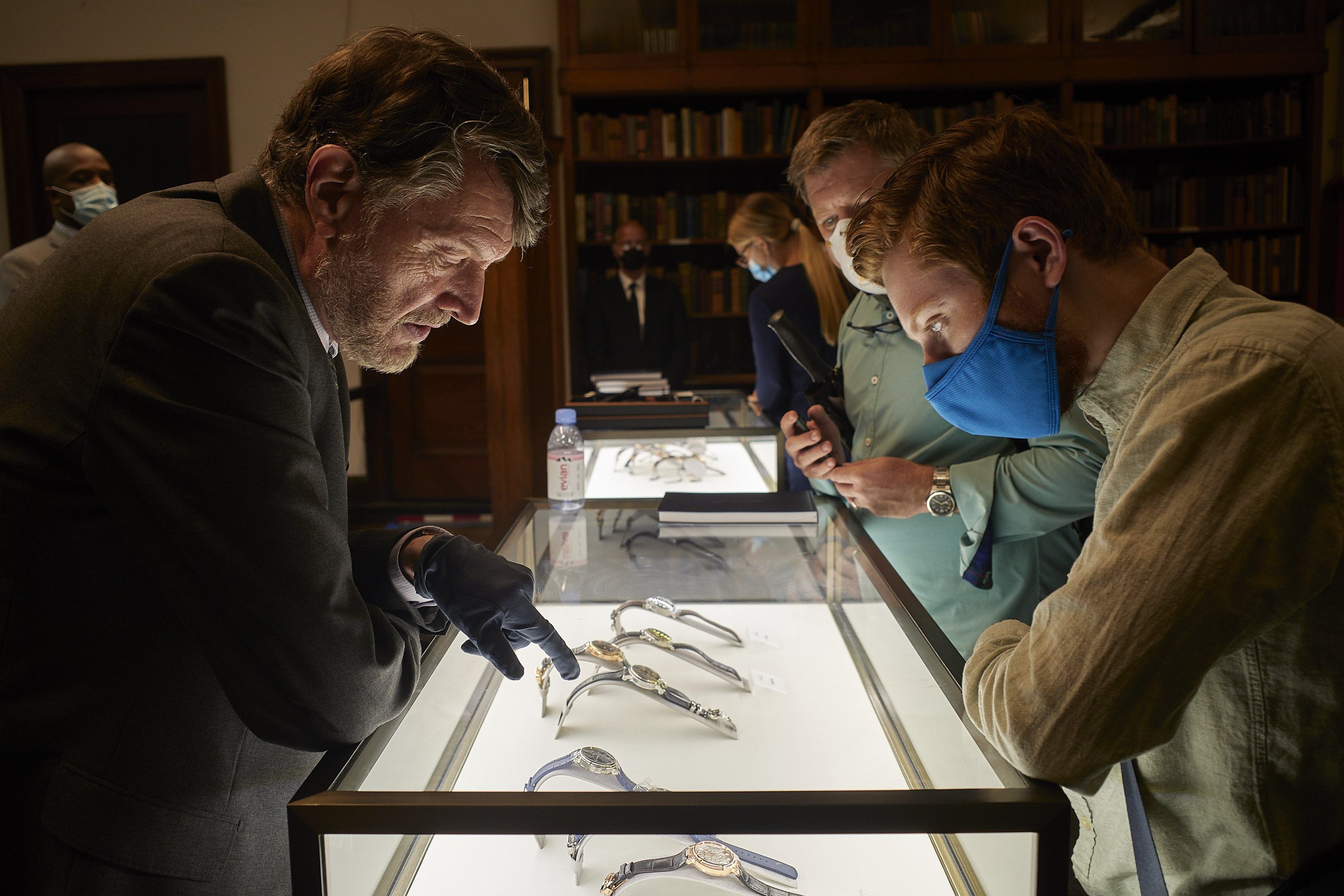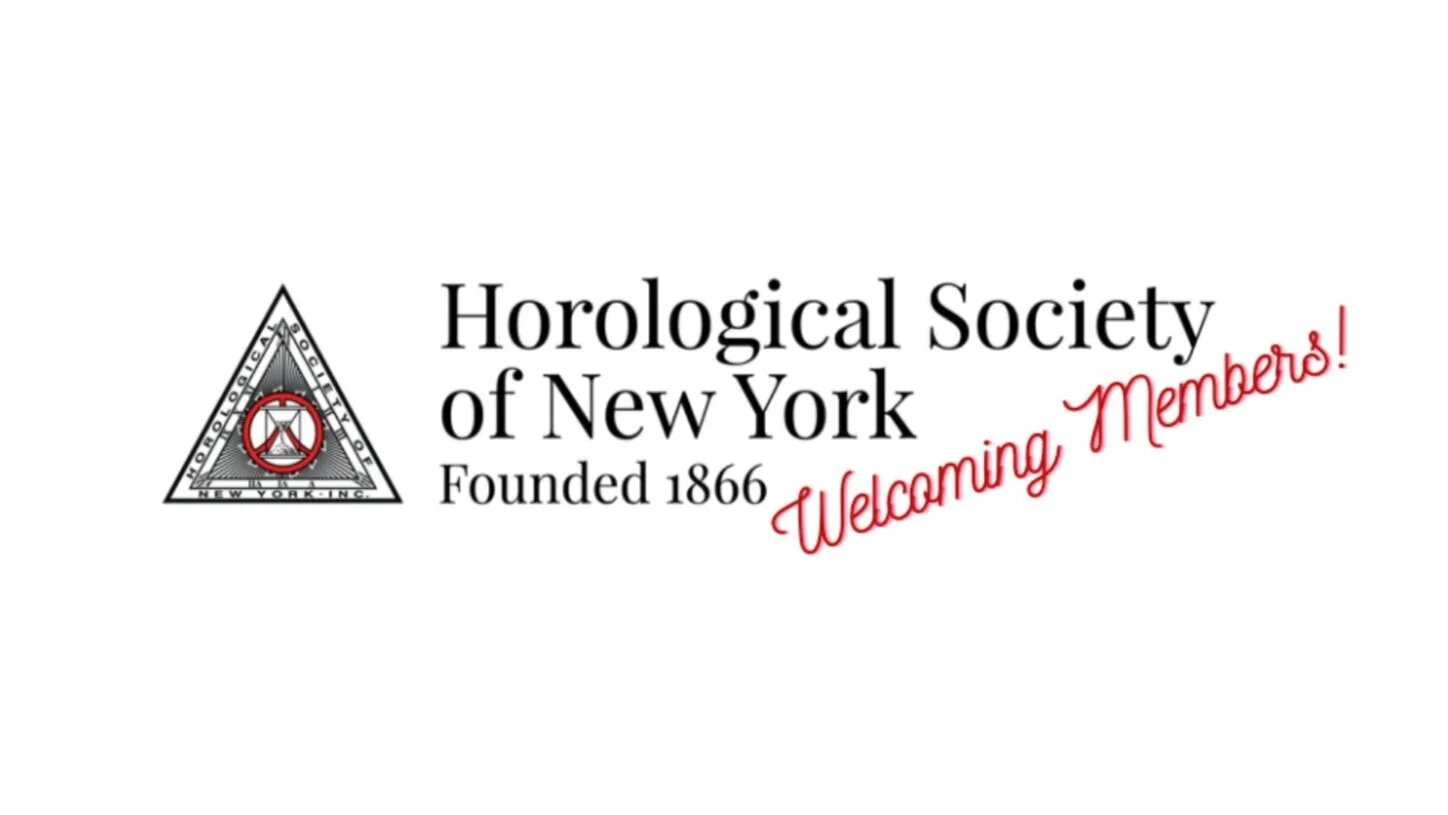On Display November 2021 — April 2022
The Horological Society of New York (HSNY) announces the opening of its second exhibition, “Horology in Art”, on display at HSNY’s library in Midtown Manhattan.
For over seven centuries, clocks and watches have been depicted in artwork around the world. Whether they’ve appeared as the major focus of a canvas or a subtle element in the backdrop, timekeepers have served as reminders of human mortality and as symbols of affluence, discipline, occupation, or technological sophistication. Now, an exhibition of over 60 examples is on display at the headquarters of America’s first watchmaking guild.
Nearly all the artworks are on loan from HSNY Exhibit Curator Bob Frishman, who created HSNY’s inaugural loan exhibit in early 2020 and now returns with a fresh theme accompanied by a 16-page illustrated catalog.
Among the original artworks are a circa 1830 folk-art portrait of a mother and child holding a pocket watch; the preparatory watercolor by Anatol Kovarsky for a 1961 New Yorker cover showing a watchmaker in his shop; and a portrait miniature on ivory, circa 1840, in which a young woman’s watch and chain are visible. Iconic artists represented in the exhibit’s prints include Salvador Dali, Jan Steen, Andrew Wyeth, Winslow Homer, and Giovanni Piranesi. Vintage photographs include two rare mid-19th century daguerreotypes, cabinet cards, cartes de visites, glass lantern slides, and several examples of Mathew Brady Civil-War-era portraits, whose subjects share the scene with his studio’s “Reaper” figural mantel clock.
“Curating these artworks for my personal collection, and now for the public to view, has been a two-decades-long passion project for me,” said Frishman, who has been a clock restorer and writer-lecturer on horology for more than 30 years. “Thanks to today’s technology, I am happy to share my archives of over 2,000 examples of timepieces displayed in artworks through a continuous slideshow exhibition. The different depictions of watches and clocks in art help us learn about how time was perceived in the past while helping to advance the art of horology today.”
Visits are free of charge and timed tickets are required to visit the “Horology in Art” exhibition, currently on display from Tuesday, November 23 until April 2022. To visit, please schedule an appointment here. HSNY is located at 20 West 44th Street, Suite 501, New York, NY 10036. Proof of vaccination and masks are required.
For more on Bob Frishman, please visit http://www.bell-time.com/. His lecture on horology in art, which took place at HSNY’s monthly lecture series on January 10, 2017, can be found here. Frishman currently serves as HSNY’s Exhibit Curator. Learn more about his work in horology in art here.




